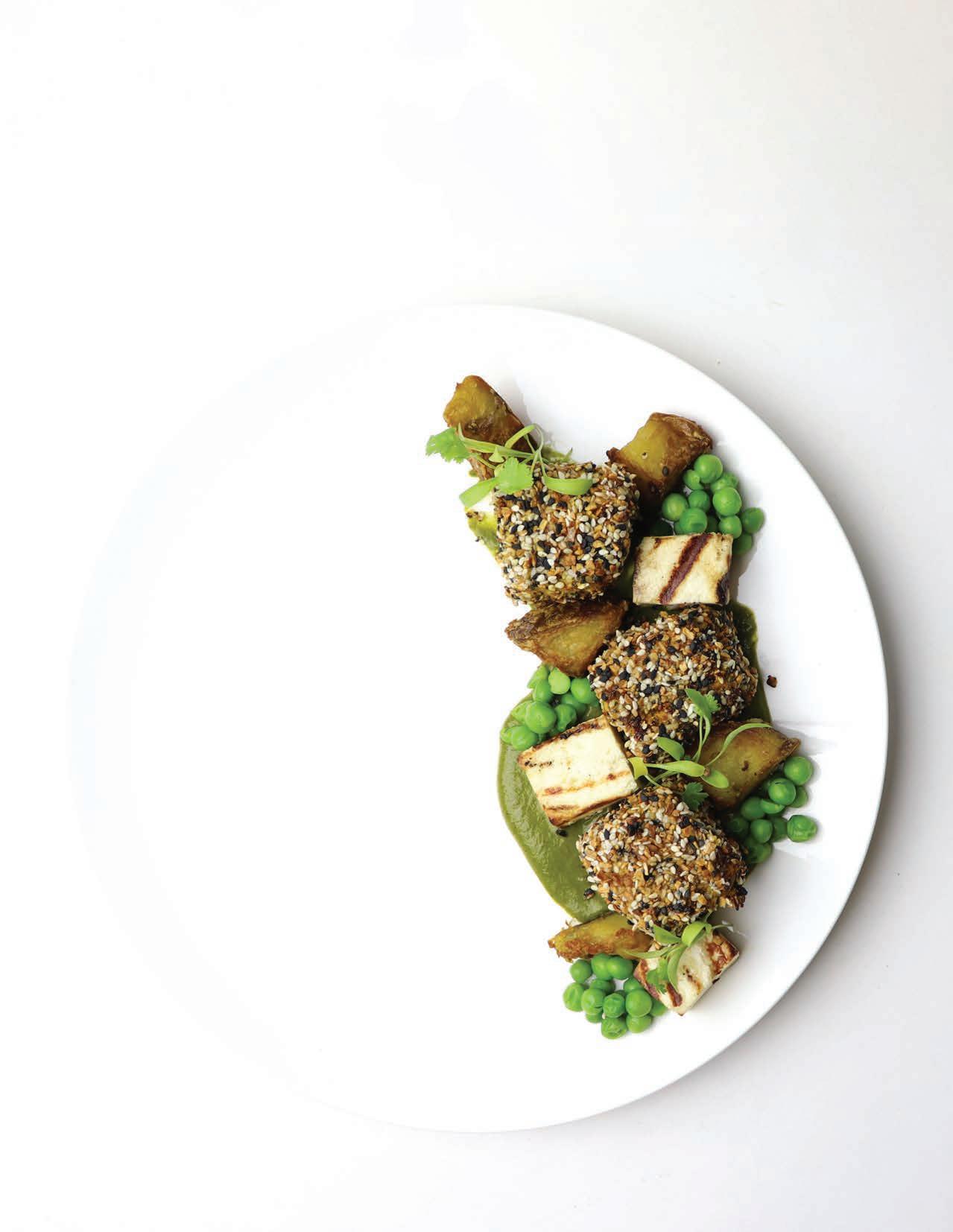
MAY/JUNE 2022 Modern Charcuterie Modern Kitchen Management Modern Indian
Unbeatable: Crisp and delicious for 40+ minutes after cooking
Reheat-able: Your customers can microwave them for 15-20 seconds to restore temperature and crispness*
Satisfying: Crisp on the outside, fluffy on the inside with great potato flavor

V t




Versatile: Use as your primary fry for both on- and off-premise customers







Profitable: Keep your customers satisfied and coming back for more fries


potatoes | avocados | fruits | vegetables | grains Request a FREE sample and see recipes at https://go.simplotfoods.com/delivery *For optimal results, microwave within one hour after cooking. ©2021 J.R. Simplot Company. The foregoing trademarks are owned by the J.R. Simplot Company. Our uniquely cut SIDEWINDERS™ Fries are proprietary and patented under one or more patents. Our
has
CONQUEST® DELIVERY+™ FRIES NOW WITH 2 NEW SHAPES!
delivery family
grown.
FEATURE STORIES
28
Modern Indian
A deep dive into the backgrounds and innovations of Indian chefs and ACF members who are redefining what this cuisine looks like today.
10
2022 ACF National Convention Preview
Read about some of the amazing speakers slated to present at this year’s convention.
DEPARTMENTS
14 Management
ACF members share their tips for recruiting the next generation workforce amid ongoing labor challenges.
18
Main Course
One ACF chef outlines the elements of a sophisticated charcuterie board, just in time for spring and summertime parties.
22
24
26
On the Side
A look at how our favorite fungi in the kitchen —mushrooms — are cultivated in the U.S.
Health
In honor of Mental Health Awareness Month in May, ACF chefs discuss ways they’re bringing more awareness to industry-wide issues.
Classical vs. Modern
University Club of Boston Chef Jason Banusiewicz showcases classic oysters Rockefeller and a modern version in taco form.
42
46
Segment Spotlight
Club chefs are finding ways to prepare for the future and redefine the member experience.
Pastry
Long-held Juneteenth celebrations feature many red-hued desserts, as well as classic cakes and other sweets.
WEARECHEFS .COM 3
IN EACH ISSUE 4 President’s Message 6 On the Line 8 News Bites 36 ACF Chef Profile 38 Chapter Close-Up 44 Chef-to-Chef 50 The Quiz
Cover photo: Tandoor tuna with saag purée, grilled paneer, aloo and micro cilantro (dish and photo by ACF Chef Keith Sarasin).
Editor-in-Chief
Amelia Levin
Creative Services Manager
David Ristau
Graphic Designer
Armando Mitra
Advertising and Event Sales
Eric Gershowitz
Director of Marketing and Communications
Alan Sterling
Contributing Editors
Amanda Baltazar, Lauren Kramer, Robert Wemischner
Copy Editor
Erica Demarest
American Culinary Federation, Inc.
6816 Southpoint Parkway • Ste 400 • Jacksonville, FL 32216 (800) 624-9458 • (904) 824-4468 • Fax: (904) 940-0741 ncr@acfchefs.net • ACFSales@mci-group.com • www.acfchefs.org
Board of Directors
President
Kimberly Brock Brown, CEPC®, CCA®, AAC®

Immediate Past President
Thomas Macrina, CEC®, CCA, AAC
National Secretary
Jeff Bacon, CEC, CCA, AAC
National Treasurer
David Ivey-Soto, CEC, CCA, MBA
American Academy of Chefs Chair
Americo “Rico” DiFronzo, CEC, CCA, AAC
Vice President Central Region
Rajeev Patgaonkar, CEC, AAC
Vice President Northeast Region
Barry R. Young, CEC, CCE®, AAC, MBA
Vice President Southeast Region
Bryan Frick, CEC, AAC
Vice President Western Region
Greg Matchett, CEC
Executive Director
Heidi Cramb
The National Culinary Review® (ISSN 0747-7716), May/June 2022, Volume 46, Number 3, is owned by the American Culinary Federation, Inc. (ACF) and is produced six times per year by ACF, located at 6816 Southpoint Parkway, Ste 400, Jacksonville, FL 32216. A digital subscription to the National Culinary Review® is included with ACF membership dues; print subscriptions are available to ACF members for $25 per year, domestic; nonmember subscriptions are $40. Material from the National Culinary Review®, in whole or in part, may not be reproduced without written permission. All views and opinions expressed in the National Culinary Review® are those of the author and do not necessarily reflect the views and opinions of the officers or members of ACF. Changes of mailing address should be sent to ACF’s national office: 6816 Southpoint Parkway, Ste 400, Jacksonville, FL 32216; (800) 624-9458; Fax (904) 940-0741.
The National Culinary Review® is mailed, and periodical postage is paid at St. Augustine, Fla., and additional post offices.
POSTMASTER: Send address changes to the National Culinary Review®, 6816 Southpoint Parkway, Ste 400, Jacksonville, FL 32216.


“Let’s go!”
You know how I love to use that phrase! I’ve been using it a lot more as we gear up for — you know it — the 2022 National Convention in Vegas, baby! Talk about igniting your passion and turning up the heat!
I’m so excited that this is my first convention as president, and I can’t wait to reconnect with friends and peers. I’m sure you all feel the same way! During our convention planning, we heard from many of you that you wanted a more diverse lineup of speakers — not just celebrity chefs. Well, you talked and we listened! I think we have a great mix this year. Our outstanding group of speakers includes the acclaimed Chef Elizabeth Falkner; Larry Forgione, a pioneer in the farm-to-table movement; Mariya Russell, who, while working as chef de cuisine at the Chicago-based Kumiko, became the first Black woman to receive a Michelin star; and Wilo Benet, owner of Wilo Eatery & Bar and Payevar Events in Puerto Rico — and that’s just a start. For a preview, turn to page 10. Register at acfchefs.org today before the prices go up!
The diversity of our NatCon lineup makes me think of our Diversity & Inclusion Task Force. Chef Susanne Ebacher-Grier, chair, has reminded me that this inclusion should and must extend beyond race and gender to include the LGBTQ community (June is Pride Month!), as well as those with diagnosed learning and physical disabilities. On that note, May is Mental Health Awareness Month. Chef Ebacher-Grier herself is featured in an article (p. 24), along with other ACF members, discussing the importance of reducing stigmas around this topic.
Did you know that May is also Asian American and Pacific Islander (AAPI) Heritage Month? ACF recognizes the important contributions of this group, starting with a feature on modern Indian cuisine (turn to p. 28). Juneteenth is in June; read all about the delicious desserts celebrated on that holiday on p. 46!
In the meantime, check out our one-day MasterCraft Summit series. The Advanced Pastry Techniques Summit is coming up this month at Dallas College (my alma mater!), followed by Advanced Culinary Medicine and Advanced Culinary Cannabis summits later this year. What an awesome way to save time while learning on the fly for pennies on the dollar! And don’t forget: If you missed any of the amazing ACF ChefsForum Webinars this past month (or year), you can download the recordings (and catch other content) at WeAreChefs.com.
See you soon! LET’S GO!!
4 NCR | MAY/JUNE 2022 | President’s Message | Un Mensaje Del Presidenta |
National President, American Culinary Federation Contact me at chefkbb@acfchefs.org or follow me on Instagram @chefkimberlybrockbrown and Facebook @chefkimberlyepicurean
Kimberly Brock Brown, CEPC, CCA, AAC
“¡Adelante!”
¡Todos saben que me encanta esa frase! Y últimamente la he estado usando mucho más a medida que nos preparamos para... ¡Sí! ¡la Convención Nacional de 2022 en Las Vegas! ¡Esto sí que levanta la temperatura y enciende nuestra pasión por la cocina!
Estoy muy entusiasmada con mi primera convención como presidenta, y no veo la hora de volver a encontrarme con mis amigos y colegas. ¡Estoy segura de que a todos ustedes les pasa lo mismo! Mientras planificábamos la convención, muchos de ustedes nos dijeron que querían una lista de oradores más diversa, no solo chefs famosos. Bueno... ¡lo quieren, lo tienen! Creo que este año tenemos un gran panel muy variado. Nuestro destacado grupo de oradores incluye a la aclamada chef Elizabeth Falkner; Larry Forgione, pionero en el movimiento de la granja a la mesa; Mariya Russell, quien, mientras trabajaba como chef de cocina en Kumiko, con sede en Chicago, se convirtió en la primera mujer negra en recibir una estrella Michelin; y Wilo Benet, propietario de Wilo Eatery & Bar y Payevar Events en Puerto Rico, y eso es solo el comienzo. Para conocer todo lo que estamos preparando, pasen a la página 10. ¡Regístrense en acfchefs.org hoy mismo antes de que suban los precios!
La diversidad de nuestros oradores de NatCon me hace pensar en nuestro Grupo de Trabajo de Diversidad e Inclusión. La chef Susanne Ebacher-Grier, presidenta, me recordó que esta inclusión debe extenderse más allá de la raza y el género para incluir a la comunidad LGBTQ (¡junio es el Mes del Orgullo!), así como también a aquellos con discapacidades físicas y de aprendizaje diagnosticadas. En ese sentido, mayo es el Mes de Concientización sobre la Salud Mental. La propia chef Ebacher-Grier aparece en un artículo (p. 24) junto con otros miembros de ACF; allí se habla de la importancia de reducir la estigmatización en torno a este tema.

¿Sabían que mayo también es el Mes del Patrimonio de los Asiáticos Estadounidenses y de las Islas del Pacífico (AAPI)? ACF reconoce las importantes contribuciones de estas comunidades, comenzando por un artículo sobre la cocina india moderna (p. 28). En junio se conmemora Juneteenth; ¡lean todo sobre los deliciosos postres que celebraremos ese día en la p. 46!
Mientras tanto, echen un vistazo a nuestra serie de un día, MasterCraft Summit. Este mes se acerca la Cumbre de Técnicas Avanzadas de Pastelería en Dallas College (¡mi alma mater!), seguida de las cumbres de Medicina Culinaria Avanzada y Cannabis Culinario Avanzado a finales de este año. ¡Qué manera tan increíble de ahorrar tiempo mientras aprenden sobre la marcha por tan solo unos centavos! Y no lo olviden: Si se perdieron alguno de los increíbles seminarios web de ACF ChefsForum el mes pasado (o el año pasado), pueden descargar las grabaciones (y ver otros contenidos) en WeAreChefs.com
¡Nos vemos pronto! “¡ADELANTE!”
WEARECHEFS .COM 5
Kimberly Brock Brown, CEPC, CCA, AAC Presidente Nacional, American Culinary Federation
Online Exclusives at WeAreChefs.com
Visit WeAreChefs.com, the official content hub for the American Culinary Federation, for stories and news about ACF members, industry and menu trends, recipes and more.

MasterCraft Summit Series
We’ll post photos and recaps from the one-day summits this spring and throughout the year. The next summit, set for May 14 at Dallas College, will cover advanced pastry techniques.
May is Asian American and Pacific Islander Heritage Month
In honor of the important contributions of this group, we will highlight stories of and about our Asian American members.
Mental Health Awareness Month
In May and continuing throughout the year, we’ll post articles with tips and resources for seeking help and staying safe and healthy.
Ingredient of the Month
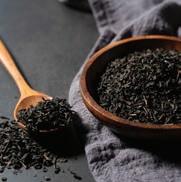
Each month, we highlight a different ingredient in the ACF’s Online Learning Center. Visit the center at acfchefs.org/ IOTM to complete a quiz and earn one hour of continuing education credit toward ACF certification and recertification.
ACF ChefsForum Webinar Series

Chef Andy Husbands (pictured) is just one of the many ACF members and industry professionals leading the ever-popular ACF ChefsForum Webinar Series. In May, Chef Husbands, an award-winning chef, author and pitmaster, will do a deep dive on the American classic: fried chicken. Missed a webinar? All recorded sessions are available online.
MEMBER SPOTLIGHT
As Seen on the Chef’s Table Online Forum
Samuel Spencer, culinary director at Guided Discoveries and chapter president, ACF Metro Mobile Chefs and Cooks Association
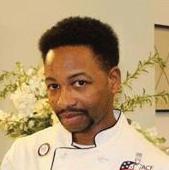
ACF’s Online Learning Center
The Culinary Insider, ACF’s biweekly newsletter, offers ACF news and links to recent articles, plus information about upcoming events, certification, member discounts, competitions, contests and much more. Sign up at acfchefs.org/tci.
Follow the ACF on your favorite social media platforms:




@acfchefs
@acfchefs
@acf_chefs
@acfchefs
@acf_chefs
American Culinary Federation
Tag us on Instagram!
Check out ACF’s Online Learning Center. There you’ll find NCR quizzes, videos of educational sessions from ACF events, practice exams for certification and more. Visit learn.acfchefs.org to get started and earn CEHs.
When posting your delicious creations on Instagram, tag #ACFChefs or send to @acf_chefs and we’ll repost our favorites here and online!
6 NCR | MAY/JUNE 2022 | On the Line |
love proudly. eat classically. live deliciously.












When you choose Prosciutto di San Daniele PDO, Grana Padano PDO and Prosciutto di Parma PDO, you show a passion for life that includes incomparably delicious, natural food that’s never mass-produced or processed. Each of these products carries the Protected Designation of Origin seal, the European Union’s guarantee of quality and authenticity, so you know they are from a specific geographical region in Italy and are created using traditional techniques that have set the standard of culinary excellence for generations.

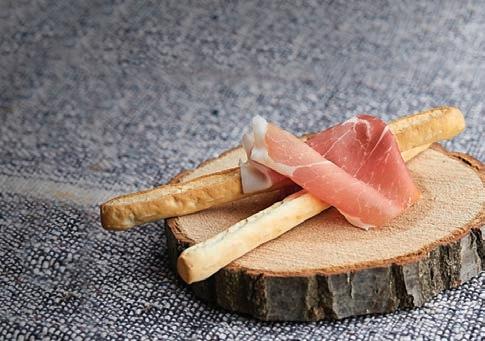
Learn more about these icons of European taste at iconsofeuropeantaste.eu





































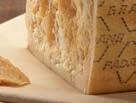































 CAMPAIGN FINANCED WITH AID FROM THE EUROPEAN UNION.
CAMPAIGN FINANCED WITH AID FROM THE EUROPEAN UNION.
THE EUROPEAN UNION SUPPORTS CAMPAIGNS THAT PROMOTE HIGH QUALITY AGRICULTURAL PRODUCTS.
The content of this promotion campaign represents the views of the author only and is his/her sole responsibility. The European Commission and the European Research Executive Agency (REA) do not accept any responsibility for any use that may be made of the information it contains.
NEWS BITES
MasterCraft Summit Series
The next in-person, one-day summit will take place May 14 at Dallas College in Dallas and cover advanced pastry techniques. Presenters include ACF Chefs Francisco Migoya, Lisa Kirschner, Lasheeda Perry and Susan Notter, CEPC, member of the 2024 Culinary Team USA (pictured from left to right below). Check out the next in-person, one-day summits coming up (register here acfchefs.org/events/summits):

• Advanced Culinary Medicine and Healthcare
August 13, University of Montana, Missoula, Montana
This summit will be focus on food and its relationship to our health, as well as help us understand the latest in nutrition science and specialized diets.
• Advanced Culinary Cannabis
Fall date/location TBD
Calling all “canna-chefs” and foodservice professionals who are interested in a deeper dive into the world of culinary cannabis. Topics covered include extraction techniques, proper dosing, THC vs. CBD and more.
Read This!
The Chicago Chefs: A Historical Culinary Collection
In this recently released book by Chef John Kaufmann and writer Joanne Madura, discover how the members of ACF Chicago Chefs helped their city become a culinary destination for people from all over the world. Throughout this book, you will learn how the organization evolved over the years since its 1906 founding, and how members’ talent and skills made being a chef a highly respected and admired profession both in and out of the kitchen. Purchase the book at lulu.com

8 NCR | MAY/JUNE 2022 | News Bites |
Salut
ACF Chef Brooke Williams, kitchen manager at Block 16 in Omaha, Nebraska, will be representing ACF and the Americas when she competes in the Worldchefs Congress & Expo in Abu Dhabi, May 30 – June 2. She will be tasked to develop and present three courses — an appetizer, entree and dessert — in three hours. Chef Williams earned a gold medal and placed second in the Student Chef of the Year competition at the 2021 ACF National Convention. She was recommended by Chef Randy Torres, CEC, AAC, ACF Competition Committee chair. “I said ‘yes’ because it’s such a great opportunity and such an honor to even be considered,” Chef Williams says. “I have been working about 20 hours a week on this, between mise en place, paperwork and actual practice in the kitchen. I also have a commis who has been helping me. Her name is Sierra Gonzales, and she puts in about 15 hours a week, and I also have a chef coach, Chase Grove, who is helping me a lot, as well!”
ACF Tampa Bay Culinary Association, Inc. partnered with The Publix Tampa Bay Collard Green Festival for the fifth year in a row. To promote the ACFEF Chef & Child Initiative in the community, the volunteer team, which was led by ACF Chef Vince Blancato, prepared tropical collard green smoothies in the kid zone for all the families to sample. The chapter also coordinated the festival's High School Student Recipe Contest and showcased the winner, Miracle Rivera, a senior at Osceola Fundamental High School, by handing out samples of her collard green deviled eggs. The chapter will continue the partnership next year.
In January, the ACF Central Florida Chapter held its annual President’s Awards Gala at Orlando’s Le Coq Au Vin, hosted
by Chef Reimund Pitz, CEC, CCE, AAC, owner. Chapter honors were awarded to the following members:

• Chef of the Year - Chef Terrence Tookes, CEC

• Student Members of the Year - Victoria Pham and Jayden Garvin
• Achievement of Culinary Excellence - James Wessman
• Vendor of the Year - Bar Harbor Seafood
ACF chefs and members of the academy from the Texas Chefs Association (pictured above), including Chef Mark Schneider CEC, CCE, AAC, Chef Morris Salerno, HAAC, Chef Patrick Mitchell, CEC, AAC, Chef Rick Neal, CEC, and Chef Robert Hale, CC, in conjunction with the Texas Beef Council cooked again for the media at this year’s NASCAR Daytona 500 Race in Daytona Beach, Florida, in February. The group fed 300 to 350 people each day with a menu that included handcarved roast strip loins and dauphinoise potatoes, braised brisket tacos with all the traditional accompaniments, apple cranberry crisp and bourbon pecan pie.
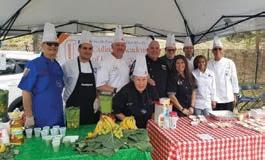
Do you have news to share? Email your stories to communications@acfchefs.org, and you can see them printed in NCR!
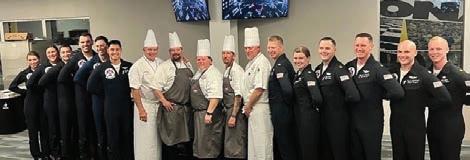
WEARECHEFS .COM 9
Chef Terrence Tookes, CEC
See you in Las Vegas

2022 AcF naTionAl ConVenTion PreVieW
Now is the time to register for the 2022 ACF National Convention, taking place July 25-28 at Caesars Forum in Las Vegas! Don’t miss this chance to attend one of the most highly anticipated annual gatherings of chefs, students and foodservice professionals in the country, with more than 60 world-class presenters, including seven Certified Master Chefs — plus demos, demos and more demos, competition kitchens and more than 100 sponsors displaying the latest and greatest when it comes to food products, equipment and more. Full registration includes a program badge with access to all one-hour seminars and demos, as well as the general session, trade show, networking breaks and meals.


Required Taste: The ArT of FoRaging
ACF Chef Alan Bergo, "the forager chef," will share how studying the botanical origins of foods has completely changed how he thinks about flavors. With his unique use of ingredients, from ramp leaf soy sauce and Korean acorn jelly to hickory nut milk and green walnut molasses, you may never look at some of the ingredients you cook with (or the outdoors) the same way again.
CuTting edge
ConcepTs: sous Vide KiTchens of TomoRrow
Keynote speaKeRs
Chef Elizabeth Falkner, an award-winning chef, film producer and cooking show judge and competitor, will kick off the festivities. Celebrity Chef Ming Tsai is another keynote presenter, along with longtime ACF Chef Jeff Henderson, founder of The Henderson Group, Inc., who will share his inspiring story of rising through the top culinary ranks to become executive chef at prestigious Las Vegas hotels after once serving time in prison.
In addition to the following presentations, there will also be an advanced chocolate demonstration, a panel moderated by the James Beard Foundation’s Anne McBride covering the state of the industry and a panel on the future of culinary education, moderated by 2021 ACF Chef Educator of the Year Pam Bedford, CCE.

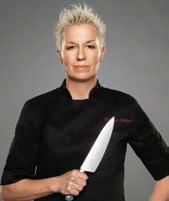
Join ACF Chef AJ Schaller from CREA (the Culinary Research Education Academy), who is an expert on cutting-edge sous vide applications and techniques, such as cryoconcentration and natural functional properties, for this exciting presentation.

PlAnT-Based: innoVaTion, noT LimiTaTion
Join Master Chef Ron DeSantis, CMC, and ACF Chef Matt Jackson as they team up to reimagine dishes through the principles of sustainability, profitability and creativity, using accessible plant-based substitutions that don’t compromise flavor. The featured chefs will showcase how both modern and classical techniques can be utilized to create memorable plates that increase both sales and diner satisfaction.
10 NCR | MAY/JUNE 2022
ACF Chef Alan Bergo
ACF Chef AJ Schaller
Chef Elizabeth Falkner, Celebrity Chef Ming Tsai, ACF Chef Jeff Henderson
Cooking WiThouT BoRders… or Food Waste!
Join Michelin-starred Chef Anita Lo, an “Iron Chef America” and “Top Chef Masters” contestant, as she demonstrates a recipe from one of her books, “Solo.” Drawing from both her years spent cooking around the world and her extensive travels, Chef Lo will share how globally inspired dishes can be interpreted for both restaurant service and more casual events.
The ArT, science And ReseArCh of Cooking
Being a successful chef is as much art as it is science and requires a combination of culinary and on-the-job training, as well as a deep understanding of the science of food. During this presentation, Tom Griffiths, CMC, will discuss how all chefs can benefit from knowing how to research food trends and how to create the gold standard from manufacturing to menu development.

FoCus on Food AlLeRgens: gluten-Free BaKing TeChniques
Did you know studies show that about 30% of Americans are now deliberately avoiding gluten in their diets? Join Chef Chrissy Jensen, CEPC, the first and only ACF Certified Executive Pastry Chef to earn the certification with a 100% gluten-free practical exam menu, as she shares her best practices in this segment. Chef Jensen will also show how you can add new, delicious and craveable gluten-free items to your baking repertoire.
WeLcome To The FuTuRe of FaRm To TaBle
Join farmer Lee Jones, once dubbed “the Willy Wonka of chlorophyll,” and ACF Chef Jamie Simpson from The Culinary Vegetable Institute, for an inspirational presentation on the latest on plant-forward cuisine and trends and how to cook with the seasons.
spotLighT on spirits: BourBon, From grAin To glAss
Join executive bourbon steward, food writer and recipe developer Paula Jones, who will guide us through an immersive tasting and flavor exercise that will take us on a journey to Kentucky, where we'll learn more about the distillation process and food pairing.

modeRn PastRy TeChniques: nougAt, Bonbons, ChocolAte And isomAlT
Join ACF Executive Pastry Chef Jessica Quiet, of The Lodge at Spruce Peak in Vermont, as she demonstrates the art of sweet confections. You won't want to miss this presentation to learn how to create memorable and delicious treats with a modern twist to add to your upcoming menus, amenities and buffets.
AdVanced seAfood skilLs: Fish Aging And FaBricAtion TeChniques
We've all heard about aging beef and curing pork; however, fish is another protein that can be dryaged to enhance texture and add richness of flavor. Join Chef Mariya Russell, former chef de cuisine of Kumiko and the first Black woman to receive a Michelin Star, as she shares her tips and techniques for aging fish and creating other seafood dishes.
CannAbis BeVeRages: demystifying inFusions, Pairings And seRVice
Joining us from Canada, ACF member Andrew Freedman, "the cannabis sommelier," will share his unique approach to pairing cannabis, food, wine and cocktails that he has used for cannabis-infused fine dining events across North America.
CaKe And eaT it, Too: essentiaL Vegan desserTs
haVe your
The day of the ubiquitous vegan fruit and sorbet plate is long gone. ACF Chef Fran Costigan, director at Rouxbe Culinary School and the "queen of vegan desserts", will demonstrate her most requested cake: The Ganache Glazed Chocolate Torte to Live For, while also discussing vegan pastry trends, how to select ingredients and more.
vegas baby!
WEARECHEFS .COM 11
Chef Anita Lo
Chef Mariya Russell
Food Writing TiPs And PastRy TricKs: hoW To Write A BestseLling CookBook
This discussion is a must for anyone who may be interested in writing a cookbook and wants to gain valuable insight for success. Join ACF ChefInstructor Michael Zebrowski, of The Culinary Institute of America, and Chef Michael Mignano, executive banquet chef at The Pierre New York, for an informative and dynamic look into the world of writing and publishing cookbooks. Moderated by Chef Chad Minton.
Chefs on TV: The seCrets of geTting noTiCed on neWs
Chef and TV personality George Geary will share his foolproof timeline for food segments and demonstrations for local or national stations, as well as cover all the details necessary to set you up for success, from pitching and booking segments to cleaning up afterward.
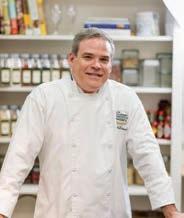



Chef PeRsPeCtiVes: PrioRiTizing mentAl WeLlness in ouR industRy
Join your fellow ACF community members from across the country as they unite to discuss the foodservice industry's struggles with stress, mental health, addiction, substance abuse, self-abuse, eating disorders and more. Moderated by ACF Palm Beach County Chefs Association Chapter President Jeffrey Schlissel, this important presentation will also include perspectives from ACF Chefs Keith Sarasin, Susanne EbacherGrier, Melinda Dorn, and Jacquelynn Quinn
seeking exCeLlenCe: Best LeAdership PrAcTiCes
From The stReets of guAdAlAjArA
To BengAluru: A CeLeBrAtion of
CuLtures And Cuisines
Join authors and longtime ACF Chefs Keith Sarasin and Ryan Manning, who will take us on an exploration of the similarities and differences between two ancient cuisines and the breads, tortillas, paratha, salsas and sauces that define them.
Food PhotogRaPhy: Chefs Behind The Lens
With one quick shot, it's now possible to transform a beautiful plate of food into a dazzling work of art. Join famed food photographer Alan "Battman" Batt as he shares his techniques, tips and tricks on how to create the best pictures of your dishes.
Join Victor Gielisse, CMC, principal of PS4M Consulting, LLC, as he explores with you the key opportunity of leading people in a competitive foodservice and hospitality market. Explore the lessons chefs must understand in business to plan for the future and stay ahead of the competition.
Hotel Information
Spots are filling up! Discounted room blocks are available at Harrah’s and Flamingo Las Vegas. Visit acfchefs.org/ events to book directly.
AAC Dinner and Luncheon
The 50th annual American Academy of Chefs (AAC) Fellows meeting and dinner will be on Tuesday, July 26. The AAC Spouse’s/Significant Other Luncheon will take place on Wednesday, July 27. Register at acfchefs.org/events
12 NCR | MAY/JUNE 2022 | National Convention |
Chef-Instructor Michael Zebrowski
ACF Chefs Keith Sarasin and Ryan Manning
Chef George Geary
spotLighT on AmericAn Cuisine: The FaRm-To-TaBle moVement
ACF Chef Larry Forgione, who has been called “the godfather of American cuisine,” will talk about the CIA’s American food studies curriculum, which he helped develop, and discuss the key elements of the farm-to-table movement today.
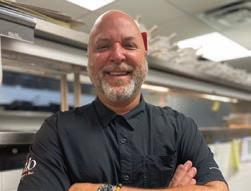
2024 ACF Culinary Team USA Sponsors


A sincere Thank You to the American Culinary Federation’s partners who support ACF Culinary Team USA.
Other session topics to be determined will be presented by ACF
Chef William “Wilo” Benet, an award-winning chef, author, TV personality and owner of Wilo Eatery & Bar in Puerto Rico; Master Pastry Chef Frank Vollkommer, CMPC; ACF
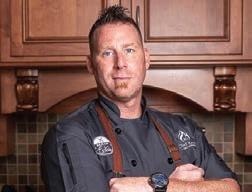
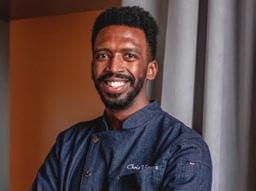
Chef Kevin Des Chenes, private chef “to the stars”; ACF Chef Chris Viaud, a “Top Chef” contestant and owner of Greenleaf and Ansanm in Milford, New Hampshire; and more. For the developing lineup, visit acfchefs.org/events.

WEARECHEFS .COM 13
Clockwise from top left: ACF Chef William "Wilo" Benet; Master Pastry Chef Frank Vollkommer, CMPC; ACF Chef Kevin Des Chenes; ACF Chef Chris Viaud.
KITCHEN MANAGEMENT TODAY
Focusing
If your kitchen is chronically shortstaffed these days, you’re not alone. Labor shortage is a challenge across the country, and some say it might be partially related to a shift in the mindsets of younger generations entering the workforce.
“When I grew up in the culinary world, we used words like ‘paying your dues in the industry,’” says Chef Jeffrey Quasha, CEC, CCA, AAC , director of retail culinary innovation at Morrison Healthcare. Chef Quasha logged 70- to 100-hour workweeks and was never home for the holidays. “We all conformed and adapted according to what the industry asked us to do. It was the mentality of the kitchens we grew up in, and we never questioned it because we were so loyal to the industry,” he says. A few years ago, he was forced to recognize that the industry has changed, and that he’d need to change how he recruited and engaged new staff.
MEANINGFUL ENGAGEMENT
Staff want to feel engaged, and working one workstation doesn’t cut it anymore, Chef Quasha says. “Gone are the days when I’d be given one task in the kitchen, like the amuse bouche, and that’s all I did for a month,” he says. “The
By Lauren Kramer
culinarians we’re engaging today want to understand the greater picture of our operations, be part of that and see their impact. For us as leaders, that’s meant changing our leadership style, and it’s not easy.”
His advice to chefs is to get to know your staff in order to engage them and elevate their experience.
“Let’s say you have a pastry chef who comes up with an amazing dish, perhaps one her mother taught her, and she brings it to you,” Chef Quasha says. “Run a special and put her name on the menu. It’s little wins like that that mean so much.”
The new workforce needs to be engaged in different ways, he adds, for example, by leveraging social media and participating in community service.
“In restaurants, people want to work where it’s exciting, and they will follow a great leader,” Chef Quasha says. “Ask yourself: Do you do community outreach? Are you posting daily on social media? Are you feeding the poor? Doing TikTok videos in your kitchen? And what do your kitchen dynamics look like in terms of diversity inclusion? These are hard questions, but if we’re willing to rip the Band-Aid off and look in the mirror, we’re all going to rise up.”
PURPOSE & PASSION
In Morrison’s human resources department, Brad Burden, the division’s vice president, notes that younger generations are looking for purpose and passion in their work. “We had to adjust our advertising beyond benefits and pay, to talk about
14 NCR | MAY/JUNE 2022 | Management |
on the needs and lifestyles of younger workers is the new normal
//
making a difference in the lives of patients and in the community, in order to attract this generation,” he says. “Our job postings today might include things like, ‘You’ll be part of something much bigger than prepping food — we are healing patients.’”
Chef Tim Recher, CEC, AAC, executive chef and director of culinary operations at Quail West Golf and Country Club in Naples, Florida, believes the culture in a kitchen evolves with each generation, and the pandemic and labor market struggles have simply accelerated and highlighted the needs of a new generation in the workforce. “The new generation of cooks want to know how they can impact the business and make it part of their lives, and they’re figuring out how it will work for them, in their lives,” he says.
LIFESTYLE & PERKS
Chef Recher remembers a time when he would never request time off on a Saturday night or call in sick. Today, however, when staff members at Quail West call in saying they’re unwell, they’re encouraged to stay at home. “Nowadays, we have to be a lot more understanding,”

Chef Recher says. “We get to know our staff, try to make sure they’re feeling happy and fulfilled, because that balance helps them to be better employees and to deliver better quality work.”
Burden agrees, noting that millennials and Gen Zers want to know what your expectations are of them. Precision is crucial in establishing the number of hours of work, the standards to which they’re being held accountable and the opportunities they’ll have to grow. “Work-life balance is essential, and we make plans for how to cover leave of absences so staff can spend time with family and loved ones, doing things that make them happy,” Burden says. “We’re changing the company mindset to allow for those accommodations.”
For staff members that prove serious about building a career in the kitchen, incentives help. Chef Recher says that Quail West Golf and Country Club uses ACF membership and conference attendance as an added incentive to engage and retain staff. “We cover dues for staff, invite them to attend ACF meetings and support them if they want to get certified,” he says. “And I think our chefs really find value in their ACF membership. They want to move up in the ranks of the culinary world, and they realize this is an important step that will enhance their brand and set them apart from the competition. It’s not something we force on our staff, but if chefs show an interest, we encourage it and are excited to have them involved.”

WEARECHEFS .COM 15
Chef Tim Recher, CEC, AAC, executive chef and director of culinary operations at Quail West Golf and Country Club in Naples, Florida (left); Brad Burden, Vice President Human Resources, Morrison Healthcare. (right).
IMPACT & ALURE
Is the kitchen still a glamorous space where younger generations want to work? That depends on whom you ask.

Chef Brian Beland, CMC, AAC , executive chef at the Country Club of Detroit in Grosse Pointe Farms, Michigan, says the industry “went from being a glamorous scene to people realizing that this profession is a lot of hard work, a lot of hours. That’s a detractor for a lot of individuals who are looking for a balanced lifestyle with little to no overtime, and it means we have to run our kitchens differently. It means digging deeper into our standards to keep consistency in the type of kitchen we want to have: an educational, developmental and professional kitchen for our team members.”

But in health care kitchens like the ones Morrison Healthcare operates, the pandemic has helped elevate staff to “frontline superheroes,” Burden says. “Today you can be as famous as you want to as a health care chef. The door has been kicked wide open. A lot of our chefs have been on shows like ‘Chopped,’ ‘Guy’s Groceries’ and Food Network specials. We’ve cooked at James Beard dinners, and that’s been totally amazing for health care chefs!”
Millennials, Gen Zers and eventually Gen Alphas are forcing kitchens to come up with new, on-trend concepts that will keep younger staff engaged and excited. Embrace these changes and run with them, and you can create an innovative kitchen that’s a
highly desirable place to work. Stay stuck in old mindsets, determined to keep things the same, and success may be much more elusive.
Chef Quasha tries to keep his leadership focused on where he has been in the course of his career and who helped him to get there. “Appreciate your staff and acknowledge that they’re the ones helping you,” he suggests. “I try to always remember that my greatest accomplishment is the people I’ve trained and developed and those members of my staff who will be more successful than me.”
16 NCR | MAY/JUNE 2022 | Management |
Chef Jeffrey Quasha, CEC, CCA, AAC, director of culinary operations for Morrison Healthcare (left); Chef Quasha believes in engaging his staff in different ways to improve morale and retention (right).
“IN RESTAURANTS, PEOPLE WANT TO WORK WHERE IT’S EXCITING, AND THEY WILL FOLLOW A GREAT LEADER.”
-Chef Jeffrey Quasha, CEC, CCA, AAC










ARE TRENDING! Choose California for the highest quality, to support US farmers, and to meet your nutritious and delicious menu development needs. For more information and recipes, visit CaliforniaFigs.com
FIGS
MODERN CHARCUTERIE
By Chef Daniel Pliska, CEC, AAC
Many chefs believe that traditional garde manger is fast becoming a lost art. Fortunately, though, we’re seeing a resurgence of cold food. Charcuterie boards are one example. They’re served in restaurants and wine bars, and you’ve probably seen many new images of modern displays all over social media and in magazines. Some of these boards, however, are put together with pre-made items and are not produced with the from-scratch, house-made products that give modern boards that soigné, or sophisticated element. That’s where us chefs come into play.
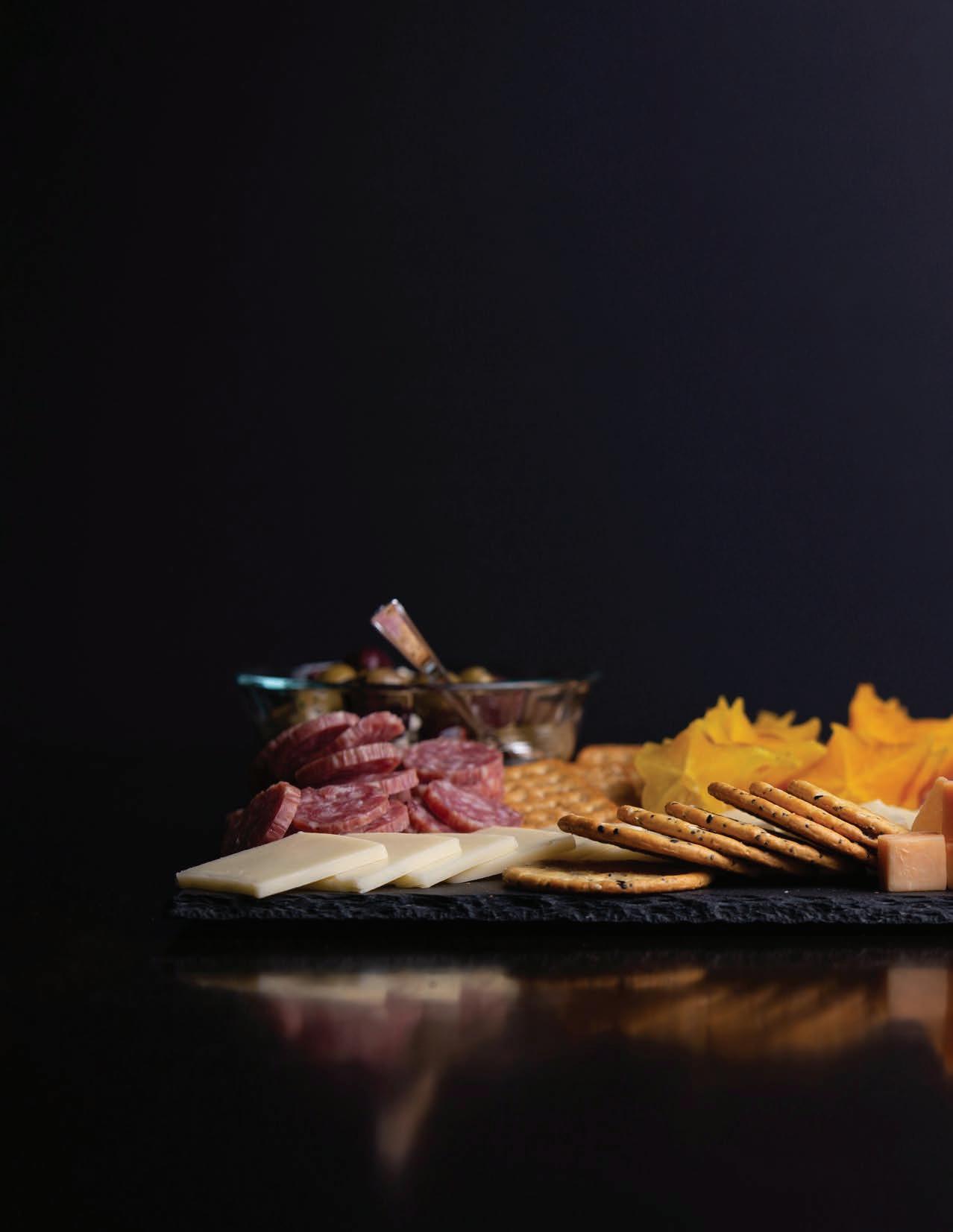
Cheeses
Breads/Crackers
18 NCR | MAY/JUNE 2022 | Main Course |
Fruits
Jams and Jellies
Cured Meats
Nuts

WEARECHEFS .COM 19
Cured meats
While salami and prosciutto remain popular as ever, why not make your own meats, pates and terrines? Duck prosciutto can be easily made in house from domestic or farmraised wild ducks. Once fabricated, the breast can be cured. When dry curing any meat, make sure to have the proper temperature/humidity control area and train your cooks to measure the dry curing salt (sodium nitrate) very carefully, as exposure to too much of this chemical can be hazardous. Duck legs can be used to make a wonderful rillette. The carcass can be made into a rich stock and then either reduced into a glace or clarified and fortified for gelee to top the rillette.
Fruits
Fresh fruits like figs, unique grapes, quince, pears and apples add color and balance to any board, while dried fruits offer an even more intense flavor with some chew. For a special housemade touch, consider macerating dried fruits like dates, figs or apricots in a fortified syrup made with liqueur, such as Grand Marnier, Cointreau, Cassis or Chambord, and freshly grated orange zest. Olives are yet another great addition that can be improved upon by infusing them in cuvees with olive oil, herbs and garlic.
Cheeses
The new trend is to combine a variety of cheeses with different colors and textures on the board. Local cheeses and traditional classics are always best. Cheeses that are easier to make in-house include fresh mozzarella, burrata and ricotta.

Nuts
Nuts are always a good accompaniment for any charcuterie board. Try them toasted, smoked or candied to add an even higher degree of sophistication. I like to candy nuts by blanching them in a simple syrup and then tossing them with sugar and spices and roasting them. Spices that work well

for this include chili powders, smoked paprika, espelette powder and even fivespice powder or star anise for a unique flavor profile.

20 NCR | MAY/JUNE 2022 | Main Course |
Jams and jellies
Jams and jellies can be a great addition to a board because they balance out the saltiness of the meat. Chefs can get creative here by making a signature
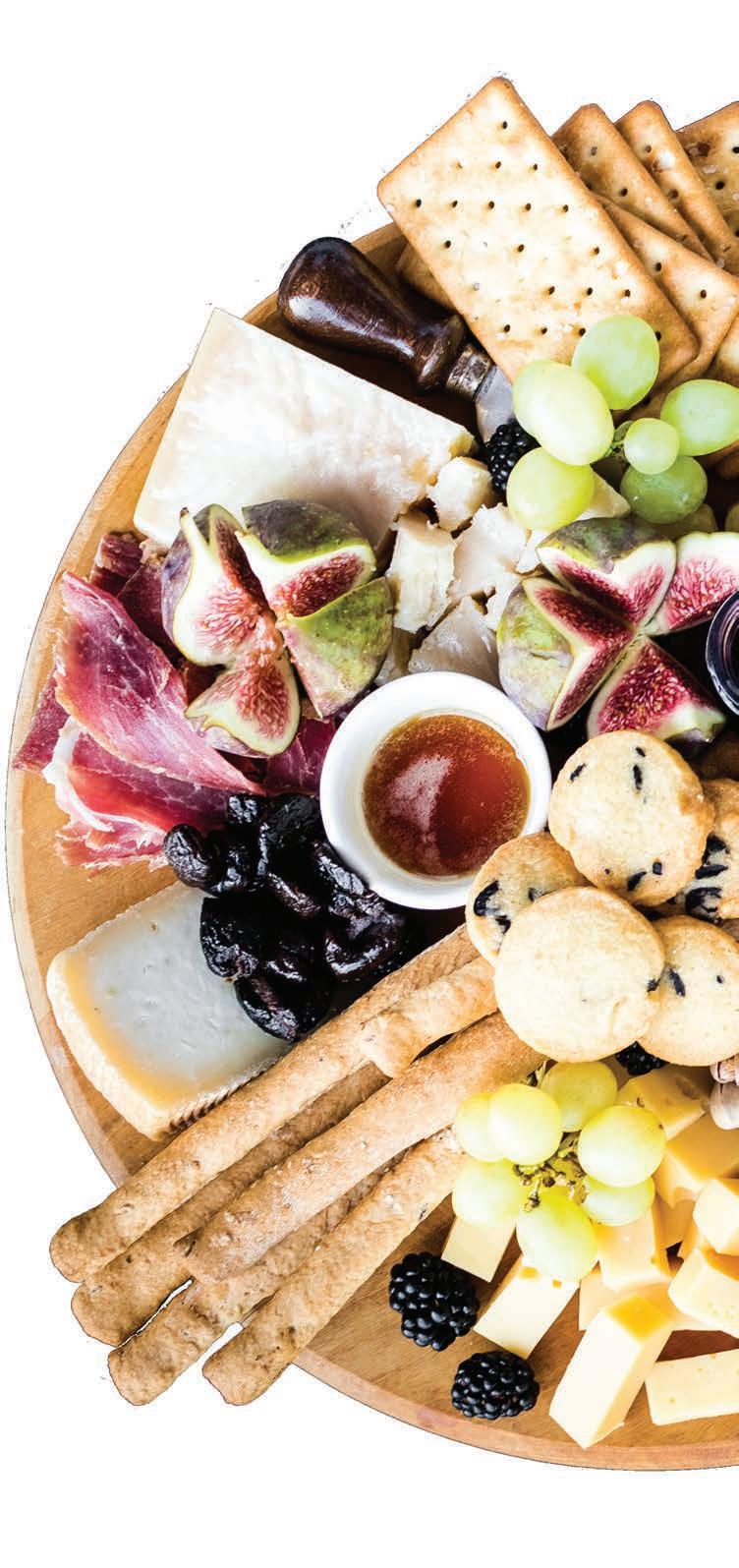
chutney, mostarda, gelee, red onion confit, pearl onion marmalade or even chili-infused jam. But be careful not to overwhelm the palate with these accoutrements since the meat and cheese are the main attraction.

Breads/crackers
Breads and crackers add crunch and serve as a base on which to spread soft cheeses, mousses or pates. Instead of purchasing pre-made items, try housebaked croustades, breadsticks, cheese straws, crackers, crisp lavash and even multi-grain flatbreads to raise the bar. Try tall and unique shapes nestled in a glass or special wire container to create an impressive presentation.
Semi-retired Chef Daniel Pliska, CEC, AAC, teaches at Ozarks Technical Community College in Springfield, Missouri. He is the author of “Pastry & Dessert Techniques,” and a restaurant columnist for Missouri Life magazine. Learn more at chefpliska.wordpress.com.
WEARECHEFS .COM 21
MAGICAL
MUSHROOMS MUSHROOMS
A Deeper Dive into the Process of Cultivating Our Favorite Fungi
// by Lauren Kramer
Next time you’re cradling a mushroom in the palm of your hand, stop for a moment to consider how these versatile fungi make their way to your kitchen.

Gale Ferranto, president of Buona Foods, a third-generation familyowned mushroom farm in Landenberg, Pennsylvania, that produces four million pounds of mushrooms per year, explains that mushrooms are grown indoors in large, dark, temperature-controlled warehouses. Mushrooms begin their lives as spawn placed in a substrate, a grower’s in-house combination of hay, straw, corncobs and horse and poultry manure. A peat moss casing is spread over mushroom beds to contain the moisture, and mushroom pins push through the casing in a growth cycle that lasts between 16 and 35 days. The pins are baby mushrooms as they start to emerge from the substrate during the fruiting
stage. These pins expand and grow larger through the button stage, ultimately forming a mushroom.
“The growing process is intrinsically environmentally friendly,” Ferranto says, “in that the substrate mix comes from farmers of hay, straw, corn, horses and chicken, and when its use for mushrooms has expired, it is recycled in bagging for topsoil, used as fertilizer and also in reclamation projects for mines and roadways.”
For mushroom farmers, the growing challenges are numerous. Mushrooms are harvested by hand before moving to the processing facility, where they are graded, vacuum cooled,
22 NCR | MAY/JUNE 2022 | On the Side |
weighed and packaged. They are shipped to customers on refrigerated trucks and trailers and are highly perishable, with an average shelf life of just seven to nine days.
Ferranto notes that it can take months for harvesters to gain the skill and experience to harvest by size without damaging the root of the mushroom. And it’s essential that the root not be damaged because mushrooms have up to four flushes after their first harvest. Root damage can have a large impact on volume and revenue.
The capital investment for infrastructure required for mushroom farming is intense, and the availability and quality of the raw materials is crucial to success. Add pest control and other uncertainty — such as the fluctuating demand created by restaurant closures during COVID-19 — and you get a miniscule glimpse of the business and environmental challenges of farming mushrooms.
Buona Foods’ top sellers are the white and brown mushroom varieties, though Ferranto notes that exotics like shiitakes, gray and yellow oysters, maitake and lion’s mane mushrooms have grown in popularity over the last decade thanks to the work of chefs and culinary influencers.





“Diners are starting to discover the flavors and textures of different mushrooms,” she says. “Mushrooms fit into so many nutrition plans and have the versatility to be used as substitutes for animal protein — for example, in a burger — or as additions to animal protein.”
Buona Foods’ portfolio includes fresh and dried mushrooms, the latter containing a more concentrated flavor once they are rehydrated, as well as a longer shelf life. “With dried mushrooms, the flavor is deeper and more complex in general, which makes them a great addition to stocks and sauces, where they add flavor and texture,” Ferranto says. Demand is especially strong for dried porcinis and dried morels in the late fall, as the holidays approach.
So, cradle that mushroom with respect. Consider its journey from spawn to harvest, and remember that fiercely flavorful fungi can transform the texture and flavor of your meal.
WEARECHEFS .COM 23
Beech mushrooms, also known as shimeji mushrooms, have a crunchy texture and nutty flavor (Credit: The Mushroom Council).
Exotic mushrooms such as maitake, enoki and lion’s mane have grown in popularity, thanks to chefs and culinary influencers (credit: The Mushroom Council).
IT'S OK TO NOT BE OK
Mental health issues are a common struggle in the hospitality industry, but change is afoot to break the taboos // By
Amanda Baltazar
The food industry was shocked in 2018 when Chef Anthony Bourdain took his own life. But those who knew the celebrity chef and travel guide were less surprised; Chef Bourdain had mental health issues his whole life.
Mental health problems are rife in American kitchens, as well as in the front of house. The hospitality industry is one that has long attracted creative types who may have anxiety, depression or other issues. At the same time, it’s an industry founded on bravado, on hard work, on long hours and an ability to be tough and seem tough.
It’s time for all of that to change, say a number of professional chefs around the country.
When Chef Jeffrey Schlissel, an ACF member for more than 20 years, heard about Chef Bourdain’s death, Chef Schlissel decided to be open about his own suicide attempt when he was 18, more than 30 years ago. He then started hearing about other chefs who’d attempted to kill themselves. “It made me realize there are a lot of us who need to hear it’s OK not to be OK,” says Chef Schlissel, who runs The Bacon Cartel, a specialty food and catering business based in Boca Raton, Florida.
In August, Chef Schlissel started a nonprofit, Sharing Our Stories (SOS), with fellow chefs Art Ledda and Keith Sarasin. It began on social media, but Chef Schlissel hopes to start offline events such as fundraising dinners aimed at drawing in people who need help.

Chef Schlissel has also been a regular on Chef Zone, an Atlanta radio show where he’s discussed topics such as worklife balance. “The fact is that we have to change the perception of how society views mental health.”
Leveraging ACF
Chef Fionna Espana, CWPC, is president of the ACF Chefs de Cuisine Association of California Los Angeles, a position she uses to help people coping with mental health problems.
She makes sure to discuss issues during every monthly meeting. There are around 150 people in the Los Angeles chapter, she says, and anyone who’s having trouble can talk to any of the board members, at any time.
Chef Espana also uses Facebook and Instagram to get the word out. On those sites she posts about mental health check-ins, gives resources for mental health and offers up people to talk to. “We let them know we’re here for them and try to keep a connection through every outlet we have,” she says.
Helping Students
ACF Chef Susanne Ebacher-Grier is an instructor of nutrition, wellness and culinary arts at Center Grove High School in Greenwood, Indiana.

24 NCR | MAY/JUNE 2022 | Health |
Left: Chef Jeffrey Schlissel; Right: Chef Susanne Ebacher-Grier
She has high-functioning depression and anxiety and is very open with her students about how she deals with these issues “so they feel there’s someone they can connect with,” she says. “I try to be authentic and real and genuine, and so many kids talk to me about their personal trauma, their mental health issues.”
Chef Ebacher-Grier has deliberately fostered a motherly relationship with the students, she says. “Kids can’t learn if they’re not feeling safe and secure. They can’t learn if they’re dealing with mental health issues. I do little check-ins with them. Every kid’s needs are different, and it’s learning how to tap into that.”
Her empathy, openness and accessibility have proved so popular that many kids eat lunch in Chef Ebacher-Grier’s classroom because they feel safer there, she says. She even attracts kids who aren’t her students. “They’ve been told Chef Ebacher-Grier is very compassionate and understanding,” she says. “I’ve told the kids they can’t say anything that’s going to shock me.”
Heroes Being Vulnerable
ACF Chef Keith Sarasin, founder of The Farmers Dinner in Manchester, New Hampshire, and author of three cookbooks, is aiming to make talking about mental health less of a taboo in the hospitality industry.

In 2018, when he was concurrently running his food business, writing a cookbook and taking care of his mother who had stage 4 cancer, things became too much for him and he started seeing a therapist.
“I decided to be open about it; I wanted people who looked up to me to know it was OK [to go to therapy],” he says. “We live in a world where we need to start breaking the stigma of mental health as a weakness.”
Change starts, he explains, “with people speaking up. It starts by people we look up to normalizing the conversation. [They] need to have the courage to say, ‘I was not OK during this time, and I got help.’”
Chef Sarasin says this was personally difficult for him as the leader of a business. “I had the ideology of a leader as a strong person who lets things roll off, but that wasn’t working anymore,” he says. “It was a very hard path; it required a lot of vulnerability. It felt like I was a wimp, [but] that’s where true empowerment comes from.”
However, he points out, seeking therapy is difficult
Read All About It
ACF Chef Keith Sarasin (above) recommends these five books to help you take control of your life and work through challenging times:
• “ The Four Agreements” by Don Miguel Ruiz
• “ The Subtle Art of Not Giving a F*ck” by Mark Manson
• “ The Untethered Soul: The Journey Beyond Yourself” by Michael A. Singer
• “ The Mastery of Self” by Don Miguel Ruiz Jr.
• “ When I Say No, I Feel Guilty” by Manuel J. Smith
for many restaurant workers because of the cost, which makes it inaccessible. “We have to do better.”
Chef Sarasin continues to see a therapist, “since it’s not something you do once and you become magically cured,” he says, and continually reads books that empower him (see sidebar).
Chef Schlissel argues that change has to happen in the hospitality industry. “It’s about making this less taboo and opening this up to conversation,” he says. “Once you start talking about this, you can’t go back.”
WEARECHEFS .COM 25
Classical
ACF Chef Jason Banusiewicz , executive chef at The University Club of Boston, went with oysters as his ingredient of choice for this CVM study. For a classic version, he presents oysters Rockefeller, a staple at steakhouses nationwide, especially on the East Coast. The dish, however, is actually said to have originated in New Orleans in 1899 at the legendary Antoine’s restaurant. During an escargot shortage, oysters became the stand-in for the restaurant’s popular escargot Bourguignon. That reliance on oysters has since morphed into the classic dish (named after the wealthy John D. Rockefeller because of its super rich taste) featuring oysters served on the half shell topped with a spinach-herb-butter sauce (or creamed spinach), bacon, shallots and breadcrumbs and broiled until bubbly and crisp.

26 NCR | MAY/JUNE 2022 | Classical vs. Modern |
Modern
For a modern (and hand-held) take on oysters Rockefeller, Chef Banusiewicz remakes all the elements in taco form using lightly battered and fried oysters. He starts by spreading a bit of that craveable creamed spinach on a small flour tortilla, meant to resemble the oyster shell. The plump oyster (Blue Point or another East Coast variety) comes next, topped with pickled shallots, some bacon bits and a drizzle of mustard aioli. The oysters Rockefeller tacos — now a permanent part of the new taco section on his menu — have been selling like hotcakes.
For recipes, visit wearechefs.com
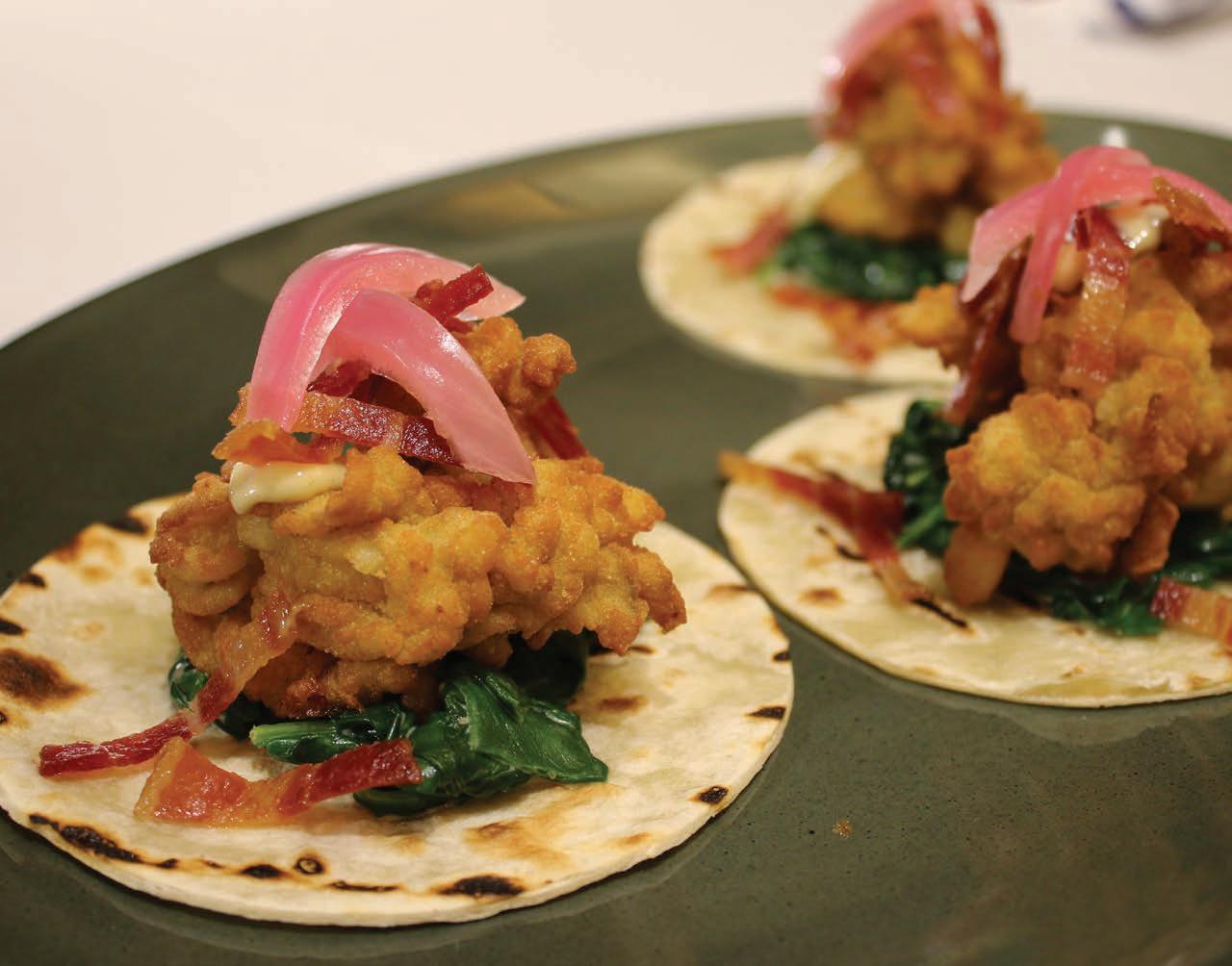
WEARECHEFS .COM 27
Modern Indian
By Amanda Baltazar
28 NCR | MAY/JUNE 2022 | Modern Indian |
Food from the subcontinent is coming into its own with chefs preparing it both in traditional and very modern ways //
Clockwise from top left: Plantain dumplings in tomato sauce at Ashok Bajaj’s Rasika in Washington D.C. (credit: Shimmon Tamara); Bebinka, a traditional layer cake from Goa on the menu at Rasika in Washington, D.C. (credit: Shimmon Tamara); A modern tikka masala bowl from Rasa, a Washington D.C. Indian fast-casual restaurant chain; Beetroot and goat cheese tikki patties on the menu at Rasika (credit: Shimmon Tamara); Various flavorings and sauces from the Rasika cookbook (credit: Shimmon Tamara).





Ask 10 chefs at Indian restaurants across the United States what constitutes modern Indian food, and you’ll get 10 different answers.
Indian food, which was virtually unknown stateside 30 years ago, is coming into its own. And what that means is varied.
ACF Chef Hari Pulapaka, CEC, Ph.D., says that for years, most Indian food in the U.S. has been formulaic. “[Restaurants] make three or four mother sauces, and everything pretty much tastes the same,” says Chef Pulapaka, author of “Dreaming in Spice: A Sinfully Vegetarian Odyssey.”

But there’s a lot of room for hope. ACF Chef Keith Sarasin is an anomaly in the world of Indian food in that he’s white. For the past decade, he has immersed himself in Indian food, serving it at pop-up dinners in New Hampshire and training with Indian chefs. He speaks Hindi, runs a podcast, “More than Masala,” and has a YouTube channel, which dissects Indian food and has 6,000 subscribers.
“I see an awakening of excitement when it comes to Indian food in the U.S.,” he says. “Indian food has not hit the mainstream here because of the myths that it’s spicy, it’s curry, it’s cheaper or it’s relegated to buffet lines.”
At the pop-up dinners from his restaurant, Aatma, Chef Sarasin serves authentic Indian flavors with American plating, “giving it a face-lift without changing the flavors,” he says. “I’m showcasing the versatility and beauty of the cuisine with modern plating techniques.”
His pop-up dinners have included themes such as celebrating Diwali and street food.
“The food being served is no longer unrecognizable over-, or worse, under-spiced food that bears no recognition to Indian food from the subcontinent,” says Monica Bhide , author of several books including “The Everything Indian Cookbook” and “Modern Spice.” “Indian cuisine in the U.S. has come a long way from just tandoori chicken and naan. Appams, dosas, biryanis are all having their day in the sun,” she says referring to Indian pancakes, flatbreads and a rice dish.
Chefs tend to veer into one of two camps: the uberauthentic and those who are changing things up. And there’s room for it all.
Authenticity First
Chef Chintan Pandya is the executive chef and owner of three New York City restaurants: Semma (southern Indian), Adda (street food) and Dhamaka (northern, eastern and western Indian). “There’s no crossover; all are different from look and feel, experience and food,” he says.
Born in Mumbai, Chef Pandya specializes in creating the Indian food with which he grew up. “We try to recreate as

30 NCR | MAY/JUNE 2022 | Modern Indian |
ACF Chef Hari Pulapaka, CEC, PhD (top), author of “Dreamining in Spice” (bottom).
authentic an experience as possible with a serious focus on the ingredients,” he points out. Some of the more unusual ingredients include goat testicles, kasundi (a type of mustard/relish) and baby shark.
The uniform T-shirts his staff wear say it all. Each is emblazoned with “Unapologetically Indian.”
This is deliberate. “When we do Indian food in this country, we are very apologetic about it,” he says. Conversely, in his restaurants, “we are serving the food the way it’s supposed to be.” He doesn’t even include naan on the menu, he says, since in India, that’s only eaten when people go out; he’s aiming to replicate the meals one eats at home. Instead, he serves paratha and chapati — flatbreads Indians eat at home, with chapati being a little thinner than paratha.
Chef Pandya goes to great lengths to create dishes the way they’re supposed to be made, which includes making his own paneer cheese. “We’re pushing the
boundaries. How do we create a better product — a paneer that’s like a paneer you’d eat in India,” he says.
Making great products starts with the best ingredients, says Chef Pandya, who spends around 10 hours per week on sourcing, paying particular attention to dairy and meat. “That’s our vision: how to get that right and get quality ingredients,” he says.
Chef Pandya believes Americans are ready for “unapologetically Indian” food, though he acknowledges his restaurants may not have achieved the same success and validation were they not in New York City.



WEARECHEFS .COM 31
Clockwise from top left: Lamb keema nachos from Chef Maneet Chauhan’s Chauan Ale and Masala House; Chef Chintan Pandya and Roni Mazumdar, owners of Semma, Adda and Dhamaka; Chauhan burger from Chauan Ale and Masala House.
One of the best-selling dishes at Adda is bheja fry, which is goat brains simmered in a tomato, onion and chili curry. Chef Pandya has been pleasantly surprised by the success of this dish, which he included in the menu against the advice of almost everyone he knew. Other dishes include lotus root kofta (with paneer, tomato cream and fenugreek); jhinga kalimirch (king prawn, black pepper, cumin, yogurt); and lucknowi dum biryani (duck neck with basmati rice and saffron).
Beyond the dishes served, Chef Pandya’s menus are different from those at many typical Indian restaurants because his are small — mostly under 20 dishes. This allows Chef Pandya to make each dish the best meal it can be.


Pushing Boundaries
Ashok Bajaj also describes what he does as pushing the boundaries. Born in New Delhi, Bajaj moved to the U.S. 33 years ago and runs the Knightsbridge Restaurant Group, which includes six Indian concepts.
Bajaj’s first stateside restaurant was The Bombay Club, which opened in 1988 in Washington, D.C., and is still thriving. Americans had many misconceptions about Indian food at that time, he says. “People thought it was curry, it was hot, it smells,” he points out. This belief was so entrenched that he had trouble renting a space for his restaurant.
The food at The Bombay Club is authentic, regional Indian food from Goa, southern India, the northwest frontier and Rajasthan. Dishes include shrimp moilee (with coconut, ginger and cardamom); adraki lamb chops (with tamarind, black pepper and ginger); and khubani duck (with apricot, mace and saffron rice).
When he opened Rasika in Washington, D.C., in 2005, he was aiming for something more modern. “Indians have started using global spices and proteins to give a modern approach to Indian food,” he says, so he used ingredients like avocados in his avocado banana chaat. Chaat is a general term for Indian street food. Bajaj’s offering features diced avocado mixed with date and tamarind chutney, accompanied by grilled banana seasoned with salt and black pepper.
At the same time, he says, he started using more locally grown food and wanted the ingredients to shine. “I wanted to have the full-flavored food, presented differently.”
He also took a modern approach to plating. Tawa baingan is a dish of eggplant and potatoes that’s “very unattractive,” Bajaj says. So instead, “we grilled the eggplant, kept the same spices but layered them. In between the layers are spiced potatoes. We wanted to keep the flavors of the food but present them differently and not over-sauce.” The dish features many spices, including cumin, red chili powder,
32 NCR | MAY/JUNE 2022 | Modern Indian |
Chef Maneet Chauhan (left), in the kitchen at her namesake restaurant, Chauhan Ale & Masala House; A colorful dinner spread at the restaurant (right); A vegan tikka masala dish created by ACF Chef Keith Sarasin of Aatma (opposite).
turmeric, fresh ginger, Thai green chili and chaat masala, which is a spice blend that typically includes black salt, cumin, coriander, black pepper, dried mango powder, mint and ginger.
Other popular dishes at Rasika include duck vindaloo, cooked with periperi masala, pearl onions and coconut rice; black cod, prepared with fresh dill, honey, star anise and red wine vinegar; and Gujarati lasagna, which features tomatoes, peanuts, zucchini, eggplant and yogurt.
Indian With a Twist
Chef Maneet Chauhan moved to the U.S. in 1998 and studied at the Culinary Institute of America. This set her on the path to becoming executive chef for the renowned Indian-Latin Vermilion restaurants in Chicago and New York. Since then, she’s not only opened her own restaurant, Chauhan Ale and Masala House in Nashville,
Serving Indian, Fast
Sahil Rahman is co-owner of Rasa, a fast-casual restaurant chain in Washington, D.C., with three locations. The goal of Rahman and his business partner, Rahul Vinod, is to serve the traditional flavors they know from their Indian parents while also making those flavors authentic to two boys who grew up stateside. “The way we’ve approached it has been maintaining the authenticity of the flavor and not toning it down,” Rahman says, “but at the same time, making it accessible.”
This means taking local, seasonal ingredients such as Brussels sprouts, which are not typically eaten in India, and infusing them with Indian spices and flavors. “We’re using ingredients that are sourced here locally, while maintaining the authenticity of the flavors,” Rahman says. The duo is using the fast-casual format, he adds, “as a vehicle for people to explore new flavors and ideas.” To make the food more accessible, dishes have American names and all are served as bowls. One of the best selling bowls is Tikka Chance on Me, which features chicken tikka, tomato garlic sauce, basmati rice, sauteed spinach, pickled radish, kachumber, (cucumber) pickled onions, toasted cumin yogurt and mint cilantro chutney. The other top selling dish is Home Cooking, which includes rice noodles, turmeric ginger shrimp, tamarind chili sauce, green beans, mango salsa, mango coconut yogurt, tamarind coconut powder and tamarind ginger chutney.
It’s about blending two cultures, says Rahman, who wants to appeal to both the millennial who has never eaten Indian food and his Indian aunt. A perfect example is the chain’s masala chai chocolate chip cookie, he says. “It’s an American classic infused with flavors we love.” Another example is serving a vegan mango lassi soft serve, which is a more familiar format to many Americans than the traditional drink.
“We think of ourselves as Indian tour guides,” Rahman says.
Tennessee, but she has also released three cookbooks and been featured on “Iron Chef.” She is now a judge on the Food Network hit “Chopped.”
Chef Chauhan believes Americans’ acceptance of Indian food has changed significantly since she moved here. “The palate is opening up a lot. People are receptive of regional Indian cuisine; they’re clamoring for it and are looking at how Indian flavors can be celebrated in fun forms.”
At Chauhan Ale and Masala, Chef Chauhan takes that fun element and runs with it, with dishes such as tandoori chicken poutine and lamb keema

WEARECHEFS .COM 33
papadi nachos, which are two of the best-selling meals. The nachos are made with lamb keema (ground lamb, tomatoes, onions, peas and spices such as coriander, cardamom, cinnamon, ginger and turmeric), papadi chips (which are spiced, typically with cumin seeds), tamarind chutney, provel cheese (a combination of cheddar, Swiss and provolone) and tomato-cucumber kachumber (a simple chopped salad).
“It’s about capturing the soul of Indian cuisine, then presenting it in a fun format,” she explains. “This is what a lot of chefs are doing. We’re indulging our creativity while still keeping our audience in mind.”
Her cooking style, Chef Chauhan says, “has had to change because the environment around me is changing. The most exciting part of cooking is its constant evolution.”
International Influences
Chef Gaurav Anand’s food is a dichotomy. On one side, you have his three New York City restaurants: Bhatti Indian Grill, which focuses on northern Indian foods; Moti Mahal Delux, featuring Mughlai cuisine (Indian food infused with Persian/Turkish and central Asian influences); and Baazi, which opened in January and features sophisticated Indian cuisine with international influences. Baazi includes dishes like chicken cafreal with Cornish game hen flambeed with Old Monk rum.
“When we brought food to the U.S., we elevated it to be able to call it modern Indian food, and it became very popular,” Chef Anand says. This included using more American ingredients like Philadelphia cream cheese and learning how to flambee.

To make the food even more accessible, Chef Anand changed his plating from smaller plates to
casseroles or skillets, which also helps make the dishes appear more “craveable” online. “People used to come to eat, and now they want to take pictures to boast on social media.” His dishes include shrimp balchao (Goan pickled prawns) and imli (tamarind) glazed lamb ribs with coriander sesame crunch.
Chef Anand has another business, CGA, which caters ultra high-end weddings — around 30 a year — all over the world.
And this is where he truly has fun. “I’ll do Indian-style Mexican or Indianstyle Italian or Caribbean. I focus on taking Indian food or other cuisines and mixing them up,” he says. This might lead to creations like chana masala hummus or paneer tikka masala tacos.
From Bakery to Supper Club

Chef Surbhi Sahni pivoted during the pandemic from running an Indian bakery to running an Indian restaurant,

34 NCR | MAY/JUNE 2022 | Modern Indian |
Chef/Owner Gaurav Anand and his team at Baazi (left); an interior shot at the restaurant (right); Kasoori methi chicken tikka with toasted fenugreek, smoked paprika and old monk flambe on the menu at Baazi (below).
Indian Food, By Region
What is Indian food? “It depends on where you’re standing,” says ACF Chef Keith Sarasin, who runs pop-up Indian dinners in New Hampshire.
Chef Chintan Pandya, executive chef and owner of three New York City Indian restaurants, agrees. “The cuisine in India changes every 50 to 100 miles,” she says. “A simple dish of chicken curry made in western India will be different from northern, southern and eastern India. Nobody’s wrong.”
Here’s a quick rundown of some of the ingredients and flavors you’ll find in the northern and southern parts of India.
Northern India
Lots of breads and flatbreads (chapati, paratha)
Meat
Nuts, especially cashews
Tandoori
Ghee
Poppy seeds
White onion gravies
Pastes and cumin seeds
Tomato- or yogurt-based sauces
Less spicy, more smoky
featuring authentic recipes such as sabudana vada (Maharashtrian crispy tapioca cakes with potatoes, roasted peanuts, green chilies, mint and peanut-yogurt chutney) and gushtaba (Kashmiri minced lamb dumplings simmered in a cream sauce with lamb stock and ground Kashmiri red chilies).
Not only is she offering these dishes in her restaurant, Tagmo, in New York City, but this spring she’s also launching a thali supper club. Thali in Hindi means “plate,” and these suppers offer an entire meal on one large platter, from appetizers and bread all the way through dessert.
In each supper club run, which will last for around four days, Chef Sahni plans to focus on a different region and the foods that are specific to it. These will include deli foods and foods from Sindhi, Bengali and the Konkani people.
Southern India
More vegetarian food
Fresh fruits and vegetables
Coconut and coconut milk
Lighter, thinner sauces
Mustard seeds
Lentils
Portuguese influences, including white wine vinegar
Spicier food, often including chili paste
More rice, more varieties of rice, less bread
Dosa (a thin flatbread)
“The idea is to really use the ingredients from that region, to speak about the differences and try and bring something very authentic to the table,” she says.
As part of the dinners, Chef Sahni will talk to diners about the food and its origins, or she’ll bring in a chef partner to do that. On the first day, only the thali meal will be offered. Then, on the following three nights, it will be offered alongside the regular menu.
WEARECHEFS .COM 35
Gunnery Sgt. Michael D. Watts
United States Marines Corps, Fort Lee, Virginia
Robert Wemischner
As we gear up for the awards at the 2022 ACF National Convention next month, we caught up with the 2021 ACF Pastry Chef of the Year, Gunnery S ergeant Michael D. Watts, about the power of being self-taught.

“I learn by trial and error; I keep trying until I figure it out,” he says. “In all honesty, I have never had any formal schooling. I have relied on books and have had the guidance of other chefs.”
At last year’s ACF National Convention in Orlando, Florida, GySgt Watts, who is based in Fort Lee, Virginia, and has served in the U.S. Marines Corps for the last 16 years, was tasked with creating a cold dessert and celebration cake. His competition dessert reflected a contemporary approach to flavors. Starting with a pre-baked sponge cake as the base, GySgt Watts had to choose three ingredients from a list of required indigenous elements. He chose Jerusalem artichoke, passion fruit and dark chocolate. The winning dish was a Jerusalem artichoke caramel chocolate ganachebased cake with a passion fruit coulis center, along with a filo dough nest holding an American eagle’s “egg” made of cheesecake, plus chocolate soil and passion fruit “caviar” for garnish.
“I passionately believe that the aptitude for the art of cake decoration, which is the part of baking that I love, resides in the hands,” GySgt Watts says. “Also, I am a competitor at heart. I like to test myself to my
limits but also incorporate other people’s ideas and thoughts into my work.”
In addition to the win last year, in 2020, just one year after joining ACF, GySgt Watts took home a gold medal and the title of Military Pastry Chef of the Year for his centerpiece cake modeled after an intricate catamaran. GySgt Watts has participated in other, non-ACF competitions, including those held during the U.S. Marine Corps’ Marine Week when competitors were tasked to work with the MREs, or meals ready to eat, often used in the military.
GySgt Watts credits various mentors for helping him get to this awardwinning place. “It takes a village to realize one’s vision, and among those who inspired me were Samantha Poe, staff sergeant, who won the first Military Chef of the Year at the 2019 convention, and Justin Frye, a civilian chocolatier and competition winner,” GySgt Watts says. “Both offered their coaching via Zoom, Facetime, phone and email and then eventually in person toward the end of my training just before the competition this year.”
GySgt Watts also credits Cpl. Adriana Hradilek and Cpl. Kalil Travis for showing him the ropes in the kitchen.
GySgt Watts also gives back. His natural affinity for artistic pastry work has led him to want to impart what he has learned on others in his military unit.
At Fort Lee, “I teach foodservice, give demonstrations and supervise mass production
36 NCR | MAY/JUNE 2022 | ACF Chef Profile |
// B y
2021 ACF Pastry Chef of the Year Michael D. Watts with one of his award-winning cakes.
for the baking students,” he says. GySgt Watts’ students learn the fundamentals of making sheet cakes, quick breads, cookies, cakes and yeasted products before moving on to intermediate and advanced levels — focusing on tarts, some chocolate desserts and even ice cream.
GySgt Watts’ hunger to compete, too, finds its way into his teaching. “Along with actual baking skills, I make sure to include lessons in accountability and lead exercises and physical training,” he says, noting that physical fitness and stamina are important for competitions and long hours in the kitchen, as well as on the battlefield. The servicemen and servicewomen he trains are prepared to go into the field into combat, while also feeding the service members there as supporting battalions and infantry personnel.
“I train with them 60 hours a week,” GySgt Watts says, “and I am honored to be looked at as an authority on the subjects of pastry and cakes and enjoy being available to answer any questions that my students may have. I believe that staying humble and modest is key. I will teach anyone who is humble and ready to learn.”
When it comes to next steps and future plans, upon retirement from the military, GySgt Watts is setting his sights on working for a successful chef in a great restaurant where he can learn and improve his skill sets. GySgt Watts is also currently working on earning the title of Certified Pastry Culinarian (CPC) or Certified Working Pastry Chef (CWPC) through ACF. “I do want to continue my pastry career and finally go to school to get a degree in this field.” Self-taught or not, GySgt Watts still knows how to bring home the gold.

WEARECHEFS .COM 37
Gunnery Sergeant Michael D. Watts, a chef-instructor, took home the gold and the title of ACF Pastry Chef of the Year at the National Convention last year.
“ALONG WITH ACTUAL BAKING SKILLS, I MAKE SURE TO INCLUDE LESSONS IN ACCOUNTABILITY AND LEAD EXERCISES AND PHYSICAL TRAINING.”
- GUNNERY SGT. MICHAEL D. WATTS
ACF PALM BEACH COUNTY CHEFS ASSOCIATION
// By Amelia Levin
Founded in 1973, the ACF Palm Beach County Chefs Association encompasses Palm Beach, West Palm Beach and other coastal towns along Florida’s Atlantic coast north of the metro Miami area.
Some of the founding and earliest members were German chefs working at The Breakers, a well-known luxury resort in Palm Beach. In 1984, German Chef Gunter Bloy, CEC, AAC , the personal chef for actor Burt Reynolds, served as president, followed by Chef Ken Wade, CEC, AAC , who was the first Southeast Region nomination for the Dr. L.J. Minor Chef Professionalism Award when that program started in 1990.
Chef Roderick Smith, CEC, AAC , another early chapter member, was nominated for the award in 1999. And in 2016, longtime Palm Beach County chapter member Chef Dominick Laudia, CEC, AAC , took home the national title for the award on behalf of the Southeast Region.
In 1999, the chapter co-hosted the first Southeast Regional Conference with the ACF Treasure Coast chapter at the Marriott Hutchinson Island Beach Resort, Golf & Marina in Stuart, Florida. The four-day conference was attended by more than 400 chefs and included culinary competitions, a trade show, various seminars and award dinners. “Overall, it was a very successful weekend,” Chef Smith wrote in an email to ACF. “The chapter was also heavily involved with the Junior Membership competition, which was the brainchild of Chef Wade, as well as Ray and Tom Schreiber (HAAC, HHOF) of Schreiber Foods. They offered to sponsor the competition and that went on for many years.”
Also forming the backbone of the chapter was the late Chef Martha Ambrosia, the first Palm Beach County chapter secretary and one of the first certified culinary educators in ACF. “She was a guiding force for the chapter for over 40 years,” Chapter President Jeffrey Schlissel says. “She believed in the ACF and pushed everyone, including many past presidents, to get their certifications, their CECs. She was instrumental in many ACF chefs’ career guidance, including my own.” Chef Schlissel points out Chef Art Ritt, HAAC , is the longest-running Palm
Meet the Board
President
Jeffrey Schlissel
First Vice President
Joseph Watters, CEC
Second Vice President
R obert Coleman, Jr.
Secretary
Javier Laurie, CEC Treasurer
M atthew Retts, CEC
Beach County chapter member; he has served 56 years in the ACF.
While the chapter lost some members during the pandemic, at its peak, the chapter was 300 strong. “We’re quite the melting pot,” Chef Schlissel says in noting what’s unique about the chapter, which currently has around 150 members. “We have many country club chefs and retirees given our location, but also some independent restaurant chefs, chefs who work for food brokers and vendors and several entrepreneurs, as well as bakers and culinary educators.”
Chef Schlissel, who is serving Year Two of his second term as president, says — like many other ACF chapter presidents right now — he is focused on building his membership back up after
38 NCR | MAY/JUNE 2022 | Chapter Close-Up |
the pandemic losses and restarting events and philanthropic activities as much as he can. To keep the lines of communication open and engagement high, Chef Schlissel keeps the chapter’s Facebook page (and his own page) very active. “My thinking is if we entice non-members to engage with us and hear about and see photos of our events, it might make them want to be members,” he says.
Chef Schlissel has also maintained his connections with local chefs and restaurateurs, encouraging them to participate in the ACF Palm Beach County chapter events and activities.


Many of those activities are philanthropic in nature. In the past, the chapter has held many events in collaboration with Quantum House, a hospitality house for children and families going through treatment for serious medical conditions at St. Mary’s Medical Center in West Palm Beach. “Our chapter members go there on a weekly or twice a week basis to cook food, but the annual fundraising event in June, Culinary Creations, has raised hundreds of thousands over the years,” Chef Schlissel says.
For more than 25 years, the Palm Beach County chapter has been a leading source of volunteers for the Ultimate Dinner Party, an annual fundraiser to benefit the Children’s Home Society of Florida. The event has raised more than $8 million during its lifespan. Palm Beach County chapter Chef Robbie Hammond, CEC, AAC , a former country club chef, started the fundraiser when one of his sous chefs initially struggled to adopt a child (but went on to adopt many children with help from the society).
Chef Joseph Watters, CEC , executive chef at Jonathan’s Landing Golf Club in Jupiter, Florida, was the first Palm Beach County member to earn the chapter Chef of the Year Award twice and back-to-back (2018, 2019). He came up with the idea to hold a major hurricane

relief fundraiser, which he hosted at his club, to support victims of Hurricane Dorian, which hit the Bahamas hard in 2019. That event raised about $43,000, according to Chef Schlissel.
Chef Robert Coleman, Jr., the chapter’s second vice president, has remained extremely active in the community as director of food services for The Lord’s Place, a social services center for the homeless in West Palm Beach. Recently, Chef Coleman worked with chapter members and others to put together a group of volunteers, including Palm Beach County chapter chefs, who donated their time to feed a group of homeless veterans.
Most recently, the chapter contributed to Jose Andres’ World Central Kitchen’s #ChefsForUkraine mission to help raise funds and feed refugees fleeing their war-torn country. Held at Wycliffe Golf and Country Club, the dinner — which featured many items prepared by the club’s Executive Chef Christopher Park and Executive Sous Chef Jean Celestin using donated ingredients — had more than 300 guests and raised more than $25,000 for Ukraine refugees. A Wycliffe member whose sister is in Ukraine even spoke at the event.
In addition to Chef Schlissel, other Palm Beach County chapter members who donated products and/or cooked at
WEARECHEFS .COM 39
Clockwise from top left: Chef Joseph Watters, CEC (left) executive chef of Jonathan’s Landing in Jupiter, Florida, hosted a Hurricane relief fundraiser at his chapter in 2019, seen masked and plating a dish during the event and standing with Chef Ben Rand, of Ben Rand Ice Studio (right); Banquet Chef John Pollo (right) from Lost Tree Country Club in North Palm Beach serves paella with Henry Balansa, line cook (left) during a chapter fundraising event.
the event included Eddie Alves (Smithfield); Chef Michael Kuckelman, Jr. (Bush Brothers Provisions); Master Baker Manfred Schmidtke, CEC, CEPC, AAC; Chef Matthew Retts, CEC , who is chapter treasurer; Chef Joshua Giro (Aberdeen Country Club); and Chef Bryan Frick (Nestle), CEC, AAC , ACF vice president of the Southeast Region. ACF’s director of strategic partnerships and Palm Beach County chapter member Chef Jacqui Pressinger, CPC , prepared Ukrainian-inspired desserts for the event. Some of the savory dishes (inspired by the cuisine of Ukraine and the Baltics) included smoked trout with potato pancakes, sour cream and chives; smoked beet tartare; housemade gravlax with pickled onions, apple and dill vinaigrette; and seared lamb loin with beets, cabbage and borscht sauce with dark rye and sour cream.

“We promoted the event heavily on social media; it was so successful that I had [ACF members] from West Virginia, California and Michigan contacting me asking how they could do similar events for Ukraine with their chapters,” Chef Schlissel says. “It’s community events like these that I feel is one of the best things ACF stands for; our community involvement is an integral part of our culinary code of conduct. What better way to heal communities than through food?”
While events and philanthropy are important aspects of Chef Schlissel’s focus, so are networking and education. “We’ve had master butchers hold demos for us; Chef Susan Notter, CEPC , did a chocolate demo on a farm, and we also had a presentation on fermentation,” he says. Chef Notter is the pastry manager for the 2024 Culinary Team USA. In other meetings this past year — including one held in conjunction with the ACF Miami chapter — members have discussed how to navigate supply chain shortages and reconnect with local producers, as well as deal with ongoing pandemic issues.
“We have a lot of talented members,” Chef Schlissel says, “so what I want to focus on in the next few years is bringing back those educational opportunities that are so important to our chapter.”



40 NCR | MAY/JUNE 2022 | Chapter Close-Up |
Clockwise from top left: (left to right) Palm Beach County chapter Chefs Walter Tanner, Manfred Schmidtke, CEPC, and Chef Jacqui Pressinger, CPC with the ACF national office; AJ Azqueta, farm manager for Lox Farm talks during a chapter event; Longtime chapter member Chef Art Ritt, HAAC (left) and Chef Har Lahman, former treasurer, dressed for an AAC reception; (left to right) Chef Schmidtke, Chef Matt Retz, ACF Palm Beach County Chapter President Jeffrey Schlissel and Chef Millie Sayegh, CC, at the Ukraine fundraiser.
ACF Thanks Our Loyalty Partners

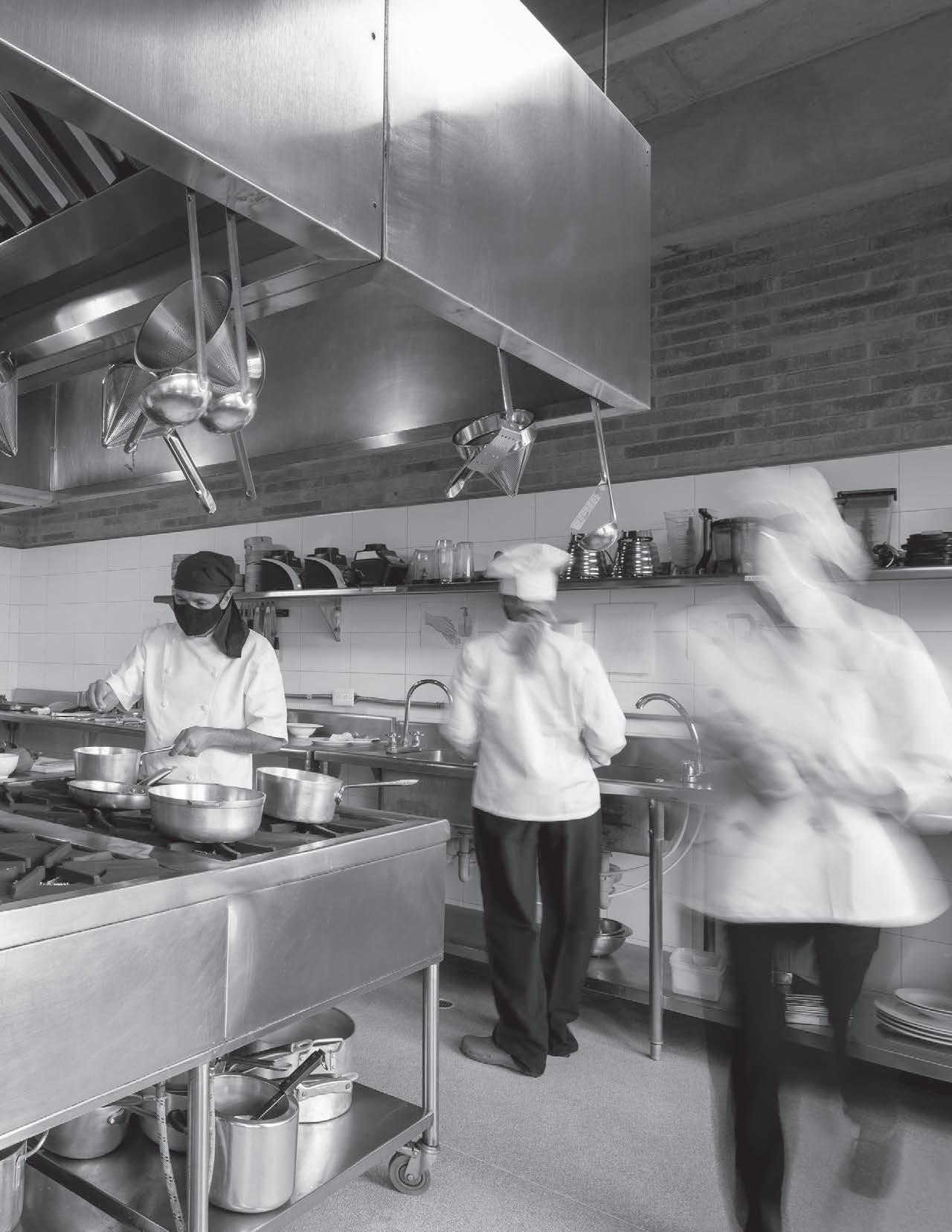
CREATING MENU INSPIRATION
City & Country Clubs
Two years after pandemic shutdowns, some pivots have become permanent fixtures //
By Lauren Kramer
If there’s one truth that’s been magnified by the pandemic, it’s that ‘normal’ no longer exists. COVID-19 has changed everything in the food and beverage industry, and no chef has gone unscathed. While the private or pre-paid membership base of clubs and resorts delivers a certain insularity to this segment of the industry, chefs have nonetheless been forced to adapt in order to stay afloat and keep their guests safe and happy. The strategies chefs have implemented to make this happen endure to this day, and perhaps the only silver lining is the guests themselves, who are keener than ever to eat out, socialize and place themselves in convivial, nourishing environments.
Supply Chain Management
Chef Nick Barrington, CEC , executive chef at the East Lake Golf Club in Atlanta, has found that close personal relationships with suppliers are essential. “The supply chain is incredibly difficult now,” he says, “and without those relationships, you’re in trouble, as it becomes very difficult to take care of your customer base.”
Chef Brian Beland, CMC, AAC , executive chef at the Country Club of Detroit in Grosse Pointe Farms, Michigan, has managed his supply chain challenges by keeping a diverse portfolio of vendors, including broadliners and a large group of local purveyors for proteins. “By doing that, with a little adapting to the product that’s available, we’ve been able to maintain our supplies,” he says. “We also started increasing our inventory of dry goods and items like carryout containers to help us get through a longer cycle.”

Stockpiling has been impossible for ACF Chef Jason Banusiewicz , executive chef at the University Club of Boston. “I don’t have a lot of space in downtown Boston to stockpile food in a walk-in cooler, so I’ve had to simplify my food and focus on being adaptable and pragmatic,” he says. Supply chain issues are a daily challenge, forcing him to think 48 hours ahead at all times.
That’s meant switching from composed dishes to dishes with a la carte sides and utilizing ingredients that are available at any one time. Fortunately, the guests have embraced this new menu. “People are excited to get back to the club, and they’re more appreciative and understanding now about foodservice
challenges than they were before the pandemic,” Chef Banusiewicz says. The enthusiasm to eat out was demonstrated when Valentine's Day brunch at the club sold out within 30 minutes of reservations becoming available, forcing Chef Banusiewicz to create another seating to accommodate the demand.
Menu Adaptations
How food is served has changed significantly, Chef Banusiewicz says. “Before, we offered a buffet, but now we have a prix fixe dining experience for kids and adults, with an at-table activity like cookie decorating to keep the kids entertained,” he says. “It’s a slight transformation, but guests like it, and they really appreciate the effort our industry is putting in.”
42 NCR | MAY/JUNE 2022 | Segment Spotlight |
Chef Nick Barrington, CEC
For a golf event held this spring, Chef Barrington offered guests dining stations outside and planned a golf event for 50, as compared to the meal for 100 he would have catered previously. “It’s safer outdoors, with fewer people than normal and a more casual environment, and it’s different and exciting for diners at a time when they are dying to come out,” he says.
Outdoor dining at East Lake Golf Club and elsewhere has become a mainstay, and restaurants across Atlanta have changed their ratio of inside-to-outside dining and invested funds into their outside dining facilities, Chef Barrington adds.
High-Service Events
For Chef Barrington, the most significant change brought about by the pandemic is the transition in how events function. Where previously members would serve themselves at a large, elaborate buffet, today there are up to eight chefs monitoring and serving food, ensuring that guests never touch the serving utensils.
For the dessert selection, pastry chefs are making bitesize, individual portions that are plated and ready to go instead of large, shared cakes and pies. “In general, our chefs are making the dishes in front of guests and serving it to them right there, engaging with them,” he says. “The back of the house has come out of the shadows, and a much higher level of service has returned.”
Permanent Carryout
Chef Beland is proud that throughout the pandemic the club never lost a day of service. It shifted from in-house


dining to carryout immediately and offered in-home catering, grocery deliveries and a ready-to-eat program supplying heat-and-eat food to members. In the summer, outdoor dining became the norm, and business returned “fast, heavy and full.”
“We jammed a 12-month year into seven and a half months in terms of revenue,” he says, “and saw a record high number of weddings for our property.” The outlook for 2022 is looking extremely positive for Country Club of Detroit, and the carryout program, once utilized only on Christmas and Thanksgiving, is now a regular part of the food and beverage offerings. The outdoor dining season has also been extended as guests have become more comfortable sitting outdoors until later in the evening and dressing for cooler nights, Chef Beland says.
As chefs reflect back on the past two years at their clubs, the words ‘pivot’ and ‘adaptability’ come up again and again. Rather than retracting their offerings, clubs are increasing their dining options. Chef Beland now has two full-service restaurants open year-round and a menu in which 40% of the items are changed out every week. Chef Banusiewicz’s club is in the midst of a $26 million renovation in which a new rooftop restaurant is being added, doubling the club’s food and beverage offerings. The pandemic has required some strategic juggling, some innovative thinking and some last-minute changes. But dampened spirits? Heck, no.
“This is a resilient industry, and we’ll come back from the pandemic,” Chef Barrington says. “Everybody’s gotta eat, and our country clubs and resorts exist for a reason: because people want to go out and be serviced in a wonderful dining experience.”
WEARECHEFS .COM 43
Chef Brian Beland, CMC, AAC (left); Chef Jason Banusiewicz (right)
A Tale of Two Books
By Chef Joel Schaefer, CCC, CDM, CFPP
My first book, “Serving People with Food Allergies: Kitchen Management and Menu Creation,” was released in 2011. A few years prior, I was the culinary development and special dietary needs manager at Walt Disney World and had the opportunity to present “Food Allergies the Disney Way” at The Food Safety and Security Summit in Washington, D.C.

The conference room sat 300, and it ended up being standing room only. The presentation was so well-received that during the reception that evening, a man named Stephen Zollo, who was then senior editor at the publishing company Taylor & Francis, approached me. He loved the presentation and asked me if I was interested in writing a book about the subject. Completely surprised, I thought it was a great idea.
Working with a traditional publisher, however, involves very specific guidelines. First, you need to write and submit a book proposal. Some larger publishers require you to submit the proposal to an agent first. A standard book proposal includes the title, content description, table of contents, the features and benefits to the reader, if there are any books in direct competition with yours, what associations or organizations the book would be marketed to, and in some cases, the book length in pages, number of photos and charts and the date it will be finished. You must be very detailed to get publishers to notice you as an expert in the field.
If you are lucky enough to have your proposal accepted, you will sign a contract and receive an advance, an agreed-upon sum of money for recipe testing and other costs. If you worked with an agent to get the book deal, the agent can negotiate a better advance for you, but agents often take about 15% of the cut.
Once you go to write, I recommend writing what you know before doing any research on subject matter. I remember being stuck on researching content for three chapters and was into six months of writing. I was frustrated so I called my good friend Carol Fenster, who has published at least 10 cookbooks. She said, “Write what you know first.” I started writing and finished five chapters in two months. Wow, did I feel great!
An important step is to create the recipes. My publisher did not have much experience with cookbooks, so I was given free rein to do the recipe content. My wife, Mary Schaefer, is a pastry chef, so we worked together. This was the best part: cooking and writing recipes. But wait — how do you write a recipe? Not all chefs know how to write a recipe correctly. Do the research on writing directions that anyone can follow. Do not use restaurant

44 NCR | MAY/JUNE 2022 | Chef-to-Chef |
Chef Joel Schaefer, CCC, CDM, CFPP, published his first book the traditional route and self-published his second (left).
terms that the average consumer may not understand. Scale the recipes to serve two to four people, not 30. Make sure to test the recipe at least three times, then give it to a friend or colleague to try. If it works for them, you are good to go.
For the food photography, we hired a local company to take the photos, and we did the cooking and food styling. In some cases, publishers will hire their own photographer for the shots, and this may not impact your advance, which is great. Once you submit the manuscript, there will be at least two revision sessions. The publisher will do the editing, layout and index. Once you have approved the final revision, the book will go to print.
My second book, “At Home with Your Allergy Chefs: Cooking Up Gluten-Free and Allergy-Friendly Meals Everyone Will Enjoy,” which I wrote with my wife, Mary, was selfpublished through Outskirts Press in 2021. This tale started back in 2016 when my wife and I moved to Santa Clarita, California. I just started working for Princess Cruises as the culinary development manager. Mary and I had continued with our [culinary] consulting business, but we wanted to change the focus from serving the foodservice industry to serving the food allergy consumer. We changed our business name to Your Allergy Chefs and started a new website, hired a marketing company and began creating a mix of food-allergy friendly, vegan and plant-based recipes for the consumer. We did this for three years until we realized we had some great recipes and enough content to write another book.
Working with a self-publishing company is quite different from working with a traditional publisher. Self-publishing companies offer different printing packages that you pay for upfront. This could cost anywhere from $1,500 to $3,000 (or more) just to get started, and then there will be additional fees for editing, formatting and indexing. So, the costs can add up quickly. The good part is you get more profit, and because printing is on demand, you do not have to pay for pre-printed books. This saves you money in the long run.
Self-published authors usually do not develop custom books. There are set formats and limited color schemes. If you are looking for something special, you may need to shop around. Selfpublishing companies will edit or index the book, but that can cost up to a few thousand dollars. We opted to edit and index the book ourselves. Once you pick the package, the publishing company will send its guidelines for submitting the manuscript as a Word document. Your book needs to be laid out in the order you want it printed. You have to do your own photography and food styling or hire someone to do this. There are two to three edit sessions. If you exceed these, you will pay additional costs for each edit.
When you go with a traditional publisher, you have fewer upfront costs but less projected profit and less control over the
book process. The upside is that publishers handle the marketing, layout, editing, indexing, and in some cases, photography, which saves you money and precious time. The only thing is, you have to land the book deal in the first place, and that can be a competitive feat these days. The selfpublishing route costs you more money upfront, but you have more control over laying out and marketing the book. In the end, you will get more money back when you sell self-published books than you will earning royalties for traditional books sold.
Both options had their pros and cons. In the end, they were both great experiences, and our books have been well-received. We are now in the process of revising “Serving People With Food Allergies: Kitchen Management and Menu Creation'' with Taylor & Francis. I am very excited to work with the publisher again because the company really makes the process easy. The book is scheduled for release in summer 2023 with new recipes, techniques and processes for keeping guests safe with food allergies. If you are ready to publish your first book, sharpen your knives and your thinking caps and get writing.
Chef Joel Schaefer is the founder of Your Allergy Chefs (www.yourallergychefs.com), a consulting and education company that provides tips, resources, personal and professional coaching, research and development for products and recipes for food allergies, intolerances and gluten-free and plant-based cuisine. He is currently a chef-instructor at The Culinary Academy of Las Vegas.

WEARECHEFS .COM 45
Chef Joel Schaefer, CCC, CDM, CFPP (left) co-wrote his second book with wife, Chef Mary Schaefer (right).
THE DESSERTS OF JUNETEENTH
Red-hued sweets, classic cakes and more symbolize this important celebration //
By Robert Wemischner
On June 19, 1865, Union Maj. Gen. Gordon Granger announced in Galveston, Texas, “The people of Texas are informed that, in accordance with a proclamation from the executive of the United States, all slaves are free.”
More than 150 years later, June 19, or Juneteenth, has been declared a national holiday. Like most celebrations, food is central, varied and includes some down-home cooking and baking. Initially, historian Jessica B. Harris says in her book “High on the Hog: A Culinary Journey from Africa to America,” “the emancipation celebrations were times of reflection and featured prayer meetings and religious services giving thanks for deliverance from bondage. Gradually the heartfelt prayers of Thanksgiving became secularized, and by the early twentieth century, Juneteenth was a time of cakewalks and parades.”
The backbone of Juneteenth festivities has always been the table, Harris writes, with many red-hued foods meant (by some accounts) to symbolize the blood that was shed over the years of enslavement. On the sweet side, many Juneteenth menus comprise red velvet cake, hibiscus lemonade and red soda. On the table, too, is watermelon — the origins of which are somewhat debated, with some studies showing that watermelon stemmed from plants in the southern part of the African continent.

For Pastry Chef Cheryl Day, owner of Back in the Day Bakery in Savannah, Georgia, and author of “Cheryl Day’s Treasury of Southern Baking,” Juneteenth serves as a bittersweet reminder of the history of Black emancipation. On sheet cakes sold for the holiday, she pipes the words “Lift Every Voice and Sing” from a well-known hymn commonly sung in church. “On the solemn occasion, our sweets are celebrating,” she says. “Learning to bake in the South with my grandmother, I realized just how resourceful Black women bakers were, using lesser cuts of pork and wasting nothing to put tasty and filling food on the table. On Juneteenth, now a national holiday, our bakery cases are a literal cakewalk, overflowing with prime examples of good old-fashioned American baking.”
Going beyond the expected red velvet cake, Chef Day points to coconut cake, caramel cake, hummingbird and layer cakes of all kinds, as well as chess and custard pies, as examples of what her customers wish to have on their Juneteenth tables.
ACF Chef Jennifer Hill Booker remembers Juneteenths from years growing up in Oklahoma with its rich history of Black American culture. “The now national holiday was a time to bring people together to worship, enjoy fellowship and be happy about
46 NCR | MAY/JUNE 2022 | Pastry |
Red-hued food and drink, such as watermelon, red velvet cake and hibiscus tea are staples at Juneteenth celebrations, meant to represent the bloodshed that African Americans endured during the transatlantic slave trade.
the freedoms that we have,” she says. “In my family, other than Thanksgiving and Christmas, Juneteenth at the midpoint of the year provides a good reason to have all of the family get together.”
With a nod to the open-pit cooking of Africa, barbecue was always on her family’s menu, along with black eyed peas washed down with hibiscus lemonade and that ubiquitous red soda. On the dessert side, tea cakes and yellow cake with a boiled chocolate frosting were staples. Chef Hill Booker notes that underpinning all of this celebratory cooking and baking were two guiding principles: Use the absolute best products that you have access to and save the valuable and relatively expensive sugar for the important day.
Growing up in San Antonio, Texas, in the state where the Juneteenth traditions originated, another chef and a food activist, Chef Adrian Lipscombe, found Juneteenth a catalyst for wider recognition of the history of her people. She is the founder of 40 Acres and a Mule, a nonprofit founded to actualize her dreams of an educational center focused on Black America and its foodways. Her vision is to preserve Black foodways — codifying stories, culture and recipes and surveying the Black agriculture that is so closely tied to the foods being cooked. The organization’s name comes from the 1865 plan to make reparations to African Americans who were enslaved. The government promised to grant the now freed slaves the right to own land upon which to make a home and create a farm — two rights that up to that point had been denied.

“Juneteenth is a time to think about where food comes from and how it lands on the plate,” Chef Lipscombe says. “We wish to create a place for Black chefs to celebrate their history. My own personal history involves my grandmother, who was the cookbook editor for the church, compiling recipes from members of the congregation that would otherwise have gotten lost to the mists of history.”
On baking for the holiday, Chef Lipscombe recalls the sour cream-infused cake of her youth. “We always had a sour cream pound cake, which was portable and at the ready to bring along wherever our celebrations were held,” she says. “I always keep in mind the inspiration that I have received from my ancestors.”
Whether it’s through red velvet or other cakes, a barbecue picnic with long-cooked collard greens or the deep red of a hibiscus-flavored drink, Juneteenth encapsulates traditions heretofore less known but still vibrant. With the commemorative date, June 19, on the national holiday calendar, our attention initially may be drawn to regrettable chapters in American history. But through the lens of food, we can appreciate the ingenuity and resourcefulness of past cooks and bakers who have left a heritage of flavor and deliciousness for future generations to enjoy.

WEARECHEFS .COM 47
ACF Chef Jennifer Hill Booker (left) fondly remembers the Juneteenth celebrations of her youth; Chef Hill Booker’s Juneteenth Jubilee hibiscus lemonade mix for the holiday.
GRAM HILL’S YELLOW CAKE WITH CHOCOLATE ICING

My father's mother, whom we called Gram Hill, would make a huge yellow cake with chocolate icing for special occasions. She only made it for birthdays and holidays like Thanksgiving, Christmas and Juneteenth, so it was a highly anticipated treat. Her cakes were always moist, and the icing was like eating a creamy chocolate bar. I remember being excited to open the tin cake dish lid and eat the chocolate crumbs around the cake. I still have her cake dish and think of her every time I bake this cake.
–
Jennifer Hill Booker
48 NCR | MAY/JUNE 2022 | Pastry |
Chef
Credit: Vivien Vanyur
INGREDIENTS
For the yellow cake:
• Nonstick vegetable oil spray
• 3 c ups cake flour
• 1 t ablespoon baking powder
• 3/4 teaspoon kosher salt
• 1 c up whole milk, room temperature
• 1 t ablespoon vanilla extract
• 1 1/2 cups granulated sugar
• 3/4 cup (1 1/2 sticks) unsalted butter, room temperature
• 6 l arge egg yolks, room temperature
For the chocolate icing:
• 3 c ups sugar
• 1 c up whole milk
• 4 tablespoons shortening
• 4 t ablespoons butter
• 1/2 teaspoon salt
• 2 teaspoons vanilla
• 1 c up good quality cocoa powder
1. To make the cake, arrange a rack in the middle of the oven; preheat to 350°F.
2. L ightly coat two 10-inch round, springform cake pans with nonstick spray. Line the bottom of the pans with parchment paper; lightly coat the parchment with nonstick spray.
3. W hisk flour, baking powder and salt in a medium bowl. Stir milk and vanilla in another medium bowl.
4. Using an electric mixer on medium speed, beat the granulated sugar and butter in a large bowl, scraping down the sides as needed, until light and creamy, about 5 minutes. Add yolks in two additions, scraping down the bowl after each. (The batter may separate slightly; it will come back together after dry ingredients are added.)
5. R educe the mixer speed to low and add the dry ingredients in three additions, alternating with the milk mixture in two additions, and beginning and ending with the dry ingredients; beat until smooth. Divide the batter between prepared pans (slightly less than 3 cups per pan); smooth the top.
6. Bake the cakes, rotating pans halfway through, until the cakes are light golden brown, the centers spring back when gently pressed and a tester inserted into the centers comes out with a few moist crumbs attached, about 30–35 minutes.

7. Transfer the cakes to wire racks; let cool in their pans for at least 15 minutes. Invert the cakes onto racks, peel off the parchment paper and let cool completely.
8. Using a long serrated knife, trim the top dome and any bumps from each cake to create a flat surface.
9. To make the icing, in a large heavy bottomed saucepan, combine the sugar, milk, shortening, butter and salt. Bring to a rolling boil over medium heat. Stir constantly to prevent scorching.
10. Once the icing mixture reaches a boil, let it boil for three minutes without stirring.
11. R emove the icing from the heat and immediately stir in vanilla and cocoa powder.
12. B eat until the icing is smooth and starts to lose its shine, about 5 minutes.
13. I mmediately start to assemble the cake. Spread 1 tablespoon of icing in the center of a platter. Place the first cake layer, top side down, in the center. Working quickly, evenly pour a thin layer of icing over the top of the cake. Carefully place the second cake layer, top side down, over the first layer, gently pressing down to secure.
14. Pour the remaining icing over the top and sides of the cake. The icing hardens very quickly so work fast and don’t try to smooth the icing once it has set —it may tear your cake.
15. C hill at least 15 minutes before cutting to let the icing set.
The cake can be made three days ahead. Wrap it tightly in plastic and chill, or freeze the cake for up to two weeks.
WEARECHEFS .COM 49
Credit: Clint Patterson
NCR Quiz
May/June 2022
By LeeAnn Corrao, CFC®
What color food is heavily featured in Juneteenth celebrations?
a. R ed
b. Yellow
c. G reen
d. Brown
When is Juneteenth?
a. June 1
b. June 15
c. June 16
d. June 19
Which dish is not traditionally eaten during Juneteenth celebrations?

a. Watermelon
b. R ed Velvet Cake
c. Cranberry Sauce
d. Barbecue
Mushrooms are harvested by hand.
a. Tr ue
b. Fa lse
What is the shelf life of mushrooms?

a. 2-3 days
b. 4-5 days
c. 5-7 days
d. 7-9 days
If the root is not damaged, mushrooms have up to flushes after their first harvest.
a. Three
b. Four
c. Fi ve
d. Si x
When you self-publish, you have fewer upfront costs but less projected profit and less control over the book process.

a. Tr ue
b. Fa lse
Chef Joel Schaefer specializes in .
a. Vegan cooking
b. Chocolate and confections
c. R omanian cuisine
d. A llergy-friendly cuisine
Where did oysters Rockefeller originate?
a. New York City
b. New Orleans
c. R hode Island
d. Maine
Which of the following ingredients does not appear in classic oysters Rockefeller?
a. Breadcrumbs
b. Butter
c. Shallots
d. Sriracha
Oysters Rockefeller has been eaten for years.
a. Fewer than 50
b. 75
c. 100
d More than 120
Who is a Chef Garde Manger?
a. A back-of-house restaurant manager
b. A cook who specializes in the preparation of cold foods
c. A n executive chef and general manager
d. A French line cook
What food is commonly seen on a charcuterie board?
a. Ch eese
b. Fruit
c. Cured meat
d. A ll of the above
What are Appams?
a. A n Indian rice dish
b. A n Indian pancake
c. A South American meat dish
d. A popular fruit in India
Paratha and Chapati are
a. Traditional Indian spices
b. Di shes commonly made with goat
c. Indian flatbreads
d. Indian cuisine restaurants in NYC
Chaat is a general term for
a. Indian street food
b. Vegetarian dishes
c. Avocadoes
d. Cuisine from northern India
50 NCR | MAY/JUNE 2022 | Quiz |
See the rest of the questions, finish the quiz and earn four CEHs toward your certification on ACF’s new Online Learning Center at acfchefs.org/olc

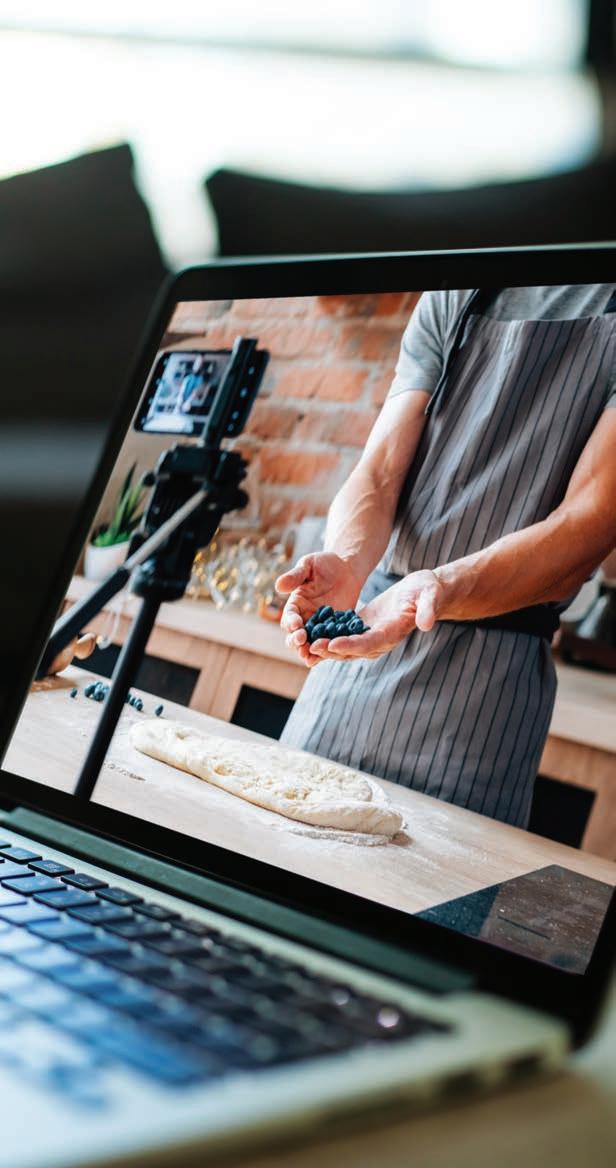
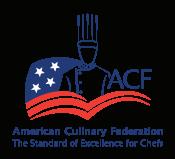
NEW YEAR. NEW SKILLS. Take time this new year to elevate your culinary knowledge and skills. Join our ACF Chefs Forum Webinar Series to learn from your peers and grow your career. Find out more at WeAreChefs.com ChefsForum W EBINAR SERIES
ACF National Convention
Las Vegas, Nevada

Caesars Forum
July 25-28, 2022
Board of Governors Meeting
AAC Fellows Meeting and Dinner
July 24, 2022
July 26, 2022
Register now at ACFChefs.org/Convention







































































































 CAMPAIGN FINANCED WITH AID FROM THE EUROPEAN UNION.
CAMPAIGN FINANCED WITH AID FROM THE EUROPEAN UNION.





































































































